
FEBRUARY 2023 PLUS: What's on | Interior advice | Be kind to yourself MARLBOROUGH’S Festivals Journey of The WhaleTrail Fresh Leaders



What’s inside




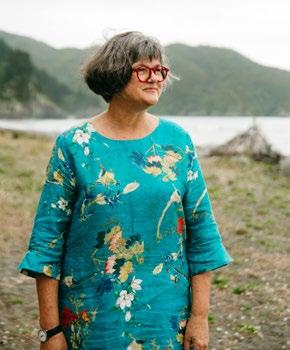
7 Headliners 30-31 Health 35 Fashion Advice 37 On the Street 38-40 My Home 43 Gardening 45-49 Property Showcase 54 What’s On Features 9-12 The journey of The Whale Trail 14-17 Inspiring their peers for 2023 19-22 Ōriwa Haddon 24-25 Environmentalist in search of common ground 26-29 Be kind to yourself Regulars
37 24-25 14-17 45-49 February 2023
he last two Februarys seemed a little weird in Marlborough without the Wine and Food Festival, so it’s so nice to have it back this month.
The Wine and Food Festival is such a great celebration of Marlborough and it’s an event I try to make every year. With the last two years being cancelled because of Covid-19 I’ve had to make do with a glass or two on my deck while listening to the stereo – it isn’t quite the same.
So we’re delighted to feature it on the cover of this month’s magazine. Another hidden gem in this month’s magazine is the story on Ōriwa Haddon, a folk artist who left his mark in various parts of Marlborough. It’s a fascinating look at the life of a fascinating man. Finally, I must make mention of our feature on the Whale Trail. This project has been worked on for several years and once finished will be a stunning addition to Marlborough and a unique way for people to see
As always, I hope you enjoy this month’s edition of Marlborough’s very own magazine.

EDITOR
Summa Donald summa@topsouthmedia.co.nz
DESIGN

Patrick Connor and Toni Woolf
CONTRIBUTORS
Paula Hulburt, Adrienne Matthews, Megan Smith, Amy Russ, Tessa Jaine, Sarah Brown, Matt Brown, Alex Stone.
ADVERTISING
Summa Donald summa@topsouthmedia.co.nz

Nikki Andrews nikki@topsouthmedia.co.nz

Rosa Tate rosa@topsouthmedia.co.nz
DISTRIBUTION
Phil and Paula Brown, Wendy Abernethy

PUBLISHER
TSM Marlborough
52 Scott St, Blenheim topsouthmedia.co.nz
 Marlborough Wine & Food Festival
Marlborough Wine & Food Festival
Editor’s note
Call for your complimentary, no obligation vein assessment & scan issuu.com/marlboroughweekly Read us on issuu
Richard Briggs




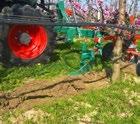




4 MAR ASB THEATRE


rnzb.org.nz/tutus
A whanau event celebrating resilience
tu- nga-tahi

SAT 25 FEB
RUTHERFORD PARK

2PM - 6PM
Kapa haka, kai stalls, ma - kete - , music and more!

MARLBOROUGH Supported by National touring partner
BOOK NOW rnzb.org.nz
Headliners
What made news in our region...
Shearathon smashes targets
A community determined to help one of their own have raised more than $68,000 by holding a shearathon. The Shear for Cora Shearathon was held last month to raise money for Cora McConnell who needs treatment overseas for ovarian cancer. The community rallied together at the Gane’s Kaituna Rodges farm, and in just 24 hours a total of 6428 lambs and hoggets were shorn. Local businesses and people pledged money per sheep shorn which saw the event smash its target.
Soft plastic recycling returns
Soft plastic recycling is set to return to the region in just four months thanks to New Zealand company Future Post opening a new processing plant in Blenheim. The company behind the scheme make fence posts out of soft plastic, and collection points for the Soft Plastic Recycling Scheme are expected to be re-established. The scheme is a welcome return to the region, having been without a soft plastic recycling option since 2018. Soft plastics include bread bags, frozen food bags, toilet paper packaging –essentially anything made of plastic that can be scrunched into a ball.
New GPs for the region
A shortage of doctors which has left some Marlborough patients struggling to access regular healthcare could soon be over. Over the past three months, six new GPs have been recruited for the region and more are set to arrive soon. Health bosses say recruitment programs are in place to attract GPs and nurses to the district and while good progress has been made, it will take time to fully address work shortages.
Junior athletes clean up at Colgate Games
Representatives from Marlborough, Nelson and Richmond Athletics clubs returned from the biggest junior athletics event in the country, the Colgate Games, last month with a swag of medals around their necks. More than 50 medals were awarded to local athletes across 35 events that took place in both Timaru and Whanganui. It’s one of the best local results in recent memory, says Tasman Athletics Childrens’ Committee president and Athletics Nelson committee member Vanessa Tappenden, “In my experience, it’s more (medals) than we’ve ever had.”
Sam’s Town turns the tables
Sam’s Town, a seven-year-old gelding from Robert and Jenna Dunn’s Woodend Beach stables turned the tables on stablemate Dashing Major to claim the Marlborough Cup in the feature race of the twoday Marlborough Harness Racing Club summer meeting last month. Dashing Major was the previous Marlborough Cup victor and took out first place in the Cup Prelude race on the Friday but was no match for Sam’s Town and driver Tim Williams who took out the overall win on Sunday.
Code club cool
Local young people are learning for the future with Marlborough District Library’s new Fiero Code Club, a club designed to help young people learn to code. The popular club is aimed at youngsters, however, anyone with a library card can sign up and use the Fiero Code platform for free, staff say an adult club could even be added if there was enough interest. The club is led by library staff who guide participants through a variety of coding projects, including building websites, creating games, and programming robots.
Be in to win a double pass to the Havelock Mussel Festival.
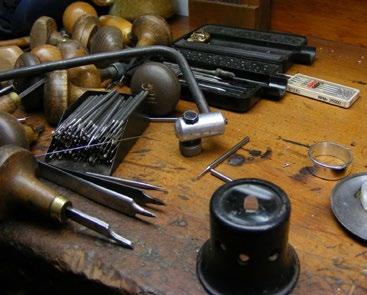

The annual festival is back for its 19th year at the Havelock Domain on Saturday 11 March 2023. Don’t miss the exciting range of entertainment and food on offer.
To enter, email us at hellomarlborough@topsouthmedia.co.nz


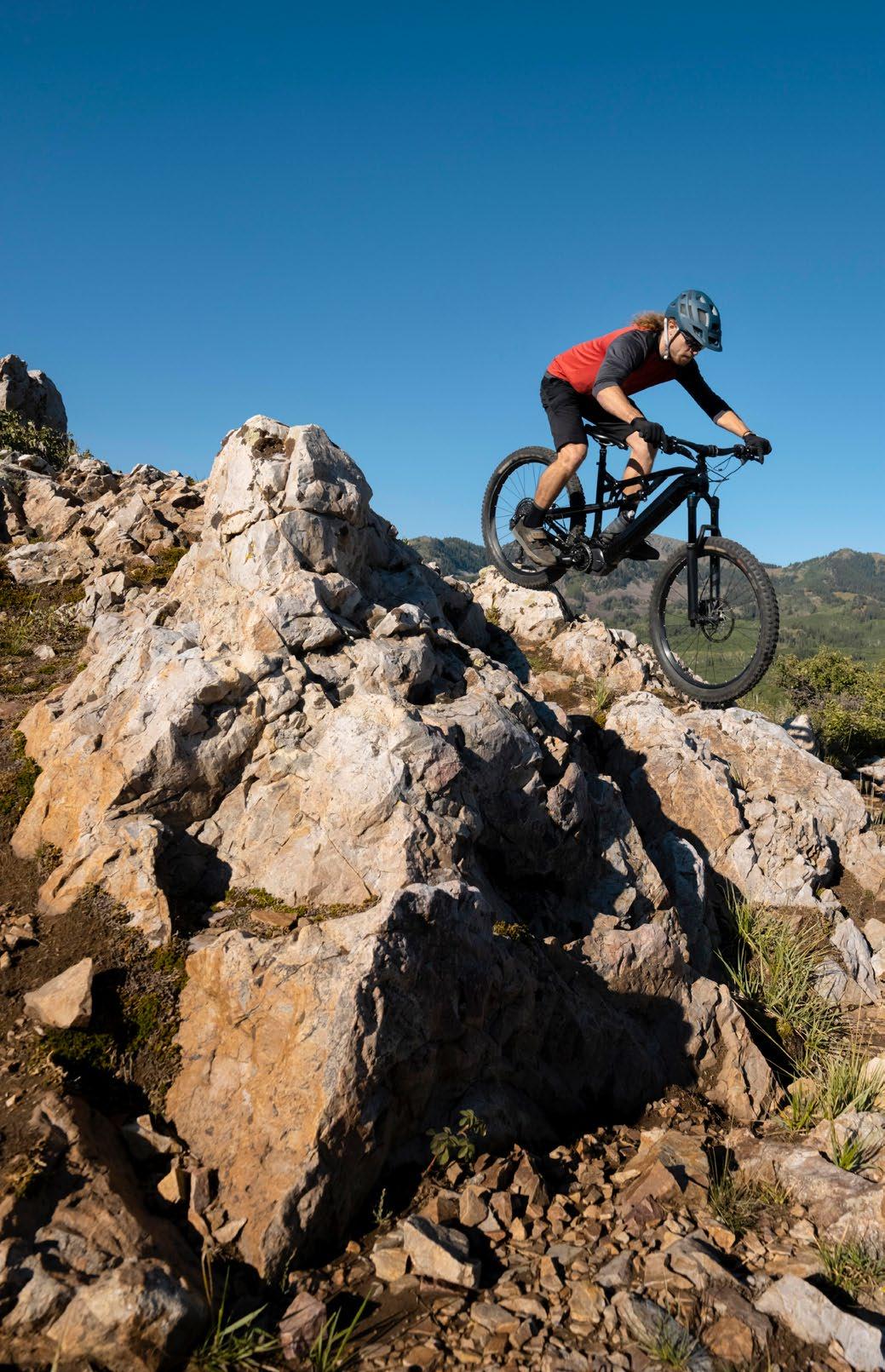


















GEAR LOCAL TRAILS COURSES BIKES HIRE OUR BRANDS WORKSHOP
Journey of The Whale Trail

9
Words: Judene Edgar
Tessa Jaine
New project manager of the Whale Trail, Nigel Muir on a section of track under construction in the hills behind Picton.




10 February 2023
1. Volunteers planting the Riverlands trail section post construction. 2. The Whale Trail is planned to be approximately 210km long, from Picton to Kaikōura. 3. Katherine Hume-Pike the Whale Trail's previous project manager, riding across the new Wairau Clip-on Bridge on its opening day. 4. Whales are a common sighting along the coast that the trail runs adjacent to. Photos supplied.
The story of The Whale Trail began dramatically at 12.02am on 14 November 2016 when the magnitude 7.8 Kaikōura earthquake struck. The earthquake destroyed homes and infrastructure along Kaikōura and Marlborough’s east coast, including sections of State Highway 1 and the rail corridor. Marlborough winemaker Dr John Forrest was woken abruptly from his sleep and almost tossed out of bed. “I couldn’t find my clothes, I couldn’t find a torch, I couldn’t find my cellphone,” he says. He left his house and walked around his winery inspecting it for damage. But in the days following the earthquake, the seed of an idea started to grow.
“A group of people had already been looking at the possibility of a trail from Picton, south towards Kaikōura. So, from that was born the idea that within the rebuild perhaps a cycleway could be incorporated.” The goal was to build “the world’s best cycling and walking trail… traversing some of the most beautiful seascapes and pastoral vistas in the world”. From its inception, the idea of a cycle trail on the defunct railway line saw a groundswell of public and council support. A working group was soon formed to look at the feasibility of developing a cycle trail and the Marlborough Kaikōura Trail Trust was established in 2017.
Despite all of the adversity surrounding them, the cycle trail provided, for many, a ray of hope for economic recovery along with the promise of social and well-being benefits. Trust chairperson Luke van Velthooven says that the trust's vision is to deliver an exceptional world-class trail from Picton to Kaikōura. “The trail can showcase our unique landscapes and connect locals and visitors with our communities. As the trail is developed there will be increased opportunities for new and existing businesses within the region.”
Stretching 210 km from Picton to Kaikōura, the Whale Trail will traverse a range of landscapes to reach previously inaccessible areas of outstanding natural beauty. Users will be rewarded with epic views of the dramatic Kaikōura Ranges, the rugged Pacific Ocean coastline and spectacular panoramas over vineyards, wetlands, tussock land and riverscapes.
Momentum and enthusiasm built quickly and a $600,000 grant from the Rātā Foundation’s special Recovery Fund helped with initial project development costs and a $322,000 Provincial Growth Fund grant supported the development of a business
case and technical study that confirmed the feasibility of the trail. An Executive Officer, Katherine HumePike, was appointed February 2019 to help drive the project forward. Marlborough District Council was also an early supporter of the Whale Trail, providing initial funding to support the feasibility study and then a further $2 million capital funding as well as ongoing operational funds.
Wairau-Awatere ward Councillor Gerald Hope says that everyone wants to see that coastline. “It’s going to be an iconic cycleway.” Not without its challenges, he says that the Trust have worked incredibly hard to negotiate with landowners, establish critical partnerships and attract funding. He was delighted when the government awarded a whopping $18 million towards construction costs through the government’s Covid-19 Response and Recovery Fund. “I’m a great fan of targeted strategic investment by central government, and Marlborough has a history of delivering. I really want to applaud the energy and initiative of all of the trustees, it’s a fantastic project.”
With construction funds secured, access agreements in place, design nearing completion and consents lodged, Stage one, Picton to Seddon, was nearly ready to go. Of the 13 bridges along the Stage one route, Luke says that two are significant structures in the context of a walking cycle trail; a clip-on bridge over Wairau River and a cycle walkway to be constructed within the existing historical rail bridge formation over the Awatere River. Despite being hit by a major storm event in July 2021 and then again in August 2022 by an ‘atmospheric river’ that created widespread flooding and devastating slips, the Wairau River clip-on was finished earlier this year. The 293-metre-long steel structure is the single largest item in the project budget. “It is encouraging that despite several weather events, the team completed this milestone within the original project timeframes and budget,” says Luke.
“The bridge was blessed on 23 August by iwi from Rangitāne, Te Ātiawa, Ngāti Toa and Ngāti Rārua. The Wairau Toa is significant to all these local iwi, and we were honoured to enjoy this special moment with them.” Wanting to use local contractors as much as possible for the work, Luke says that they have made an immense contribution, including the donation of materials, towards creating a quality regional asset. “We have an ambitious summer construction programme ahead of us as we target to complete Stage one of our project, Picton to Seddon.”
11
Luke also acknowledged the efforts of their Executive Officer Katherine, who is handing over the reins to Nigel Muir in January. “I would like to thank Katherine for her tireless work over the past four years. I can unreservedly state that without her professional leadership and energy we would not have achieved any of the milestones we now celebrate. Most significantly, the application to IRG securing $18 million of government funding, the magnitude of easement agreements and the relationship with KiwiRail and Waka Kotahi.”
In December, Nigel stepped down after nearly 14 years in the role of CEO of Sport Tasman, but he’s not new to the project or to Marlborough. A former Marlborough colt rugby player, he’s been a trustee of the Marlborough Kaikōura Trails Trust since its inception, and more recently, has been undertaking a massive restoration project at his 200ha section in Boons Valley. And while he’s sad to relinquish his role as a trustee, he says that the opportunity to roll up his sleeves was too good to miss. “Cycle trails are one of the cheapest and highest impact infrastructure for community well-being and physical activity,” he says. “The impact on communities and connectivity –bringing people of all ages together to improve wellbeing – is critically important.”
Having been a trustee for Ngā Haerenga, New Zealand Cycle Trails Trust, Nigel says that there are so many lessons that can be learned from the 22 existing cycle trails to make the Whale Trail one of the “next


generation” of cycle trails. While the cycle trails were initially envisaged for international visitors, he says that it’s actually Kiwis who got out in force to use them. “The experience of having coastline, an inland experience, an adventure into the mountains and then back out to the ocean, is a bucket list opportunity for so many people, and to do it all in one achievable manner is part of the dream.”
He’s also excited for the storytelling opportunities that the trail affords with a treasure-trove of stories from iwi, the railway history, whaling, the earthquake, and about the natural environment.

“Te Tauihu is so culturally rich and there are so many untold stories. We want to walk the journey in partnership with iwi to learn and to work out how we can honour, respect and share these stories. It’s important to take an holistic perspective when you do community projects.”
Nigel also acknowledged the big shoes he had to fill with Katherine’s departure, but is looking forward to working with the community to create new opportunities and to accelerate construction. “Cycle trails can be so powerful and reinvigorating for small communities and provide a step-change for users.
I’m just excited to be part of a legacy project.” And while Nigel acknowledges there are still going to be many challenges along the way, he’s hoping that the full 210km Whale Trail will be open in time for summer visitors at the end of 2025.

P i c t o n H e r i t a g e & W h a l i n g M u s e u m E x p l o r e t h e p a s t i m a g i n e t h e f u t u
e O p e n d a i l y 9 L o n d o n Q u a y , P i c t o n t e l 0 3 5 7 3 8 2 8 3 i n f o @ p i c t o n m u s e u m c o n z w w w p i c t o n m u s e u m - n e w z e a l a n d c o m
a
a n d e
r
S t a r t y o u r w h a l e t r a i l b y f i n d i n g o u t a b o u t s h o r e w h a l i n g i n N Z ,
t t h e p l a c e w h e r e i t s t a r t e d . . .
n d e d .
















































13 Redwood Hub Shopping Centre, Redwoodtown | Phone 03 578 0433 Mon to Fri 8:30am - 5:30pm & Sat 9am - 1pm www.bikesandscooters.co.nz In conjunction with * $500 off selected mid-drive electric bikes only. Offer not valid in combination with any other offers. Expires 28/2/2022. info@goodyersolar.co.nz CONTACT US TODAY TO BOOK A FREE SOLAR ENERGY CONSULTATiON



Fresh leaders
Words: Amy Russ
Becoming a head student is an honour many have been bestowed in years past. Marlborough Magazine talks to some senior head students from across the region about what the role means to them and what they hope to achieve during their tenure.
QUEEN CHARLOTTE COLLEGE CO-HEAD STUDENTS FOR 2023
Describe yourself in three words.
Mana: Energetic, empathetic and motivated.
Ilah: Enthusiastic, caring, loving.
Why did you want to become a head student?
Mana: I wanted to become a head student t To provide leadership, and enhance ing my own path by assisting others find theirs. I want to pay forward the guidance and support I have received at Kuini Harata.
Ilah: I was determined to be a head student at Kuini Harata to make a difference within our school. I've always been told to leave the place better than you found it; I’m striving to achieve this goal.
What would you like to achieve within your role?
Mana: I would like to ensure every student feels they are a valued member of our whānau. I would also like to help provide effective stewardship of the student council.

Ilah: There are many things I want to achieve but creating a community garden is one of my main goals for 2023. I started to find funding and resources this year but it's such a long process, it wasn’t able to be done by 2022. We are hoping to get this sorted for 2023.
What would you like to change about your school?
Mana: I would like to encourage a culture where students and staff take pleasure and pride in our kura, not just the environment but the culture.
Ilah: I don’t necessarily want to change things within my school, I want to strengthen all the good things we already have and highlight these to our whole school community. We have an amazing school, the school council in 2023 will showcase this.
Who is your role model?
Mana: I greatly admire Kobe Bryant for his work ethic, and his drive to constantly improve on his personal best.
Ilah: My mum and dad, they work as hard as they can to provide me with anything and everything as well as push me towards all the opportunities that come my way.
Where do you see yourself in ten years' time?
Mana: In ten years, I would hopefully be tiring of sustained international travel, looking at kicking off a career related to sports.
Ilah: I see myself doing a dream career, having bought my first home, living a happy and balanced lifestyle, spoiling the ones I care for.
If you were given $1 million, what would you do with it?
Mana: If I received a million dollars I would donate, invest and save, proportional to careful consideration.
Ilah: I would buy my first car, then most likely knowing me I would put most of it in savings towards a house because this is one of my goals to invest in properties while being young.
15
Mana Collins and Ilah Beattie
Describe yourself in three words.
Prachi: Driven, ambitious, and committed.
Veisinia: Approachable, confident and friendly.
Hayley: Kind, dedicated and optimistic.
Why did you want to become a head student?
Prachi: I want to take this amazing opportunity and use the voices and opinions of students to make a difference in the kura. I also want to be a role model for all students. As a woman of colour, I know how valuable it is to have a role model that you can really relate to and you feel comfortable talking to.
Veisinia: Because this is a great chance to give back to the school from which I have benefited so much. I want to serve as an excellent role model for all students, and embody what I believe by bringing the school's valuesalong with me to influence the other students I want to proudly represent the school to empower all students to be confident in their skin and stay proud of who they are. Lastly, I want to work to better myself every day because this position allows me to demonstrate authentic leadership.
Hayley: As head students, we become greater role models for the school and have a major influence on our younger and fellow students. I want this role to show that young people have a bright and promising future ahead and that we can achieve great things.
What would you like to achieve within your role?
Prachi: I want to create a different meaning to how we perceive international ākonga and culture at school, and I want to bring importance to the diversity and inclusion of our kura and use that diversity to create inclusivity and to celebrate our unity.
Veisinia: One of the many things is to achieve a strong sisterhood/bond and broader connections with all staff members. Relationships and the bond
are significant to me because this helps students participate more actively by giving them a stronger sense of connection and belonging to the school.
Hayley: We have such a strong and ever-growing sisterhood and community within the school, and I hope to reach a point where all students can come together as one and embrace each other within our school. I believe a strong community within can greatly benefit students, especially after the last few challenging years.
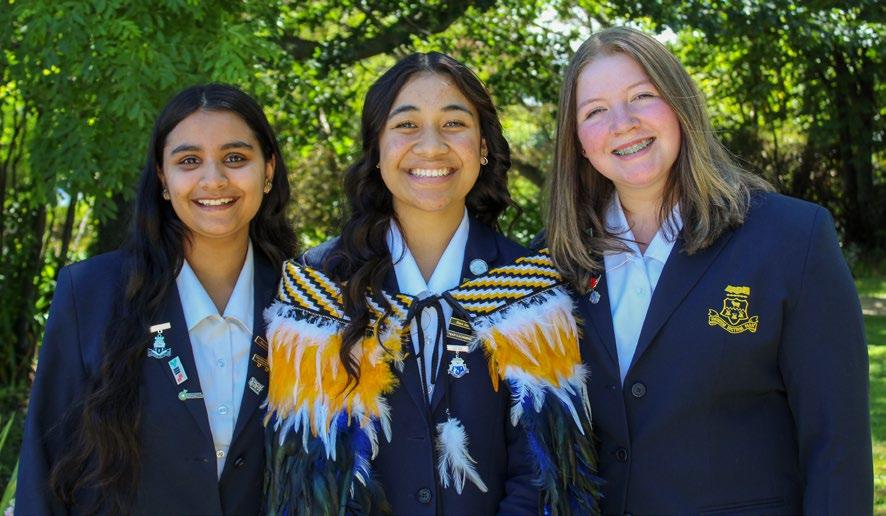
What would you like to change about your school?
Prachi: The level at which students' voices are heard and acted upon. While I know that all the staff at MGC do their absolute best, I believe that there is opportunity for more.
Veisinia: Our school is excellent overall. However, specific changes could be made. First, need to do more to strengthen the school's culture, by emphasising our values and implementing them in all the activities we do each day. Through this, I hope to include a broader student voice from other motivated students who may express their thoughts on our three guiding principles of and what they believe these could encompass.
Overall, we need to continue to uphold our core values, and staff members and senior students should try to engage with the younger generation to establish a strong bond.
Hayley: I will work alongside the other head students and prefects to gather ideason how we can continue to grow as a school. Change affects everyone, and with more voices we can make positive adjustments that will help benefit different aspects of our school community.
Who is your role model?
Prachi: My parents inspire me in such vastly different ways. My muma is the most independent, ambitious,
16 February 2023
Prachi Singh, Veisinia Moli and Hayley Gush
MARLBOROUGH GIRLS COLLEGE CO-HEAD STUDENTS FOR 2023
and intelligent woman I know. I look up to her in every possible way. My papa is humble, dedicated, and strong-willed. I aspire to be more like him every day. They both show every quality I could ever wish to have.
Veisinia: My dad is who I look up to the most. He is the backbone of the family and is strong-willed, dependable and devoted. He always goes above and beyond for his family and because of this, he is my role model. He has taught me never to forget homewho I am and my values - since doing so will help me stand up again when things get tough. In the coming year, especially, I want to be just as dependable and hardworking as he is.
Hayley: My parents through and through. They moved away from their home country to give us access to better opportunities. It was a very hard time for all of us, but they made every day easier. They push me to make the most of every opportunity and give me unlimited support. I feel very blessed as I wouldn't be who I am without them.
Where do you see yourself in ten years' time?
Prachi: Working in a reputed hospital, with a stable career as a doctor. I see stable earnings for the fulfilment of all the needs of myself and my family. I see myself living a peaceful, happy, and healthy life and most of all, I see contentment within every aspect.
Veisinia: Attending university to earn a bachelor's degree in teaching or education. I want to work in primary and secondary schooling as a fulltime teacher. Working with other people has always been
something I love to do. My ultimate goal is to become the primary school teacher that a child remembers for the rest of their life and has a positive impression on, in the hopes that they will enjoy their preceding years to the fullest.
Hayley: I will have completed my tertiary studies in hotel management and travelled the world while I work. I hope to be leading and managing a team of staff at my successful hotel in France.
If you were given $1 million, what would you do with it?
Prachi: I Invest in small businesses or enterprises, so they may embark on new ventures. I would also prioritise saving some of the money long-term. I would ensure that I donate to a few charities of my choice (Alzheimer’s NZ, Cancer Society of NZ, Women's Refuge, and International Needs NZ).
Veisinia: I would first give a portion to my family, buy my parents a new house, and assist in meeting their needs. I would save some money for the future and invest some in my academic pursuits. Finally, I would gladly spend money on less fortunate people in need to give back to the community. If there is money left over, I will, of course, treat my friends and myself!
Hayley: That has so much potential to change one's life. For myself, my top priority would be for it to go towards my future education. I would also invest into small, growing businesses for our future. I would take a year to travel, explore different cultures and experience the excitement in countries across the globe.
MARLBOROUGH BOYS COLLEGE HEAD STUDENT FOR 2023
 Chris Hebberd
Chris Hebberd
Why did you want to become a student? A bit of an impulse decision, one that had been on my mind for a while. I knew I wanted to be a leader in the school, but the idea of making change is a focus for the head boy, I've always loved the responsibility and pride myself on my work ethic and wanted to contribute that to Marlborough Boys College.
What would you like to achieve within your role? I would like to achieve an interpersonal respect with the juniors at Marlborough Boys College, rather than just doing all the background work. I believe that the mana of our school directly corresponds with the hands-on leadership, and what you put in you will get back.
What would you like to change about your school? I would like to increase the number of games and
sport equipment available to the boys at break times. I know that having a run around between classes is a great way to refresh and be able to focus. I would try to change the number of games run on the front field and the gym so that boys have a structured game at lunchtime to keep them entertained.
Who is your role model? My Dad is my role model, we share the same interests and hobbies and I look up to him in every aspect.
Where do you see yourself in ten years' time? I am a keen squash player. I have big goals for the next ten years and am hoping to achieve all of them, my main focus over the next ten years is to settle into a PE coaching or teaching roll after further tertiary education as well as and working towards playing squash for New Zealand at the Commonwealth Games. If you were given $1 million, what would you do with it? If I were to win $1 million, I would probably invest half of it into up-and-coming business, while saving half to shout all the mates a pie and spoil the family.
17
MARLBOROUGH BOYS COLLEGE CO-DEPUTY HEAD STUDENTS FOR 2023 Adam Cairns and Will Flynn

Describe yourself in three words.
Adam: Kind, determined and hardworking.
Will: Reliable, hardworking and respectful.
Why did you want to become a head student?
Adam: Because I wanted our Māori students to not be afraid to express themselves and for them to know that it is okay to be Māori.
Will: I knew I could offer strong leadership and new ideas to the school, as well as being a good role model.


Who is your role model?
Adam: I have two at the moment, and one is my principal, the other is Kiley Nepia, this is because he is amazing in the way he teachers young Māori how to be themselves, and he’s a good role model.
Will: My parents.
Where do you see yourself in ten years' time?
Adam: I see myself working with Māori students, either in Kapa Haka or teaching te reo Māori in a school. This is something that I am passionate about and where I see my future going.
Will: Living a happy and fulfilling life with my family and friends.
If you were given $1 million, what would you do with it?
Adam: I'm not sure if I could take the million dollars, but if I did, I would definitely give lots of it to my family because they have helped raise me. I would also look into different charities I could help support. Will: Invest and get on the property ladder and upgrade my truck.
RICHMOND VIEW CO-HEAD STUDENTS FOR 2023
[Answered the questions together]
Describe yourselves in three words. Honest, dependable, lots of fun!
Why did you want to become a student? We have been given so much in our time at RVS and we wanted this opportunity to bless others in the school and the community.
What would you like to achieve within your role? To inspire others to achieve their best and flourish in their lives.
What would you like to change about your school? We are a new secondary school so we would like to continue to build up the opportunities available to our students.
Who is your role model? We have a few different answers amongst us: Jesus, parents, teachers and youth leaders at the Elim Centre. They have always been kind and thoughtful towards us, even when we weren’t at our best. It inspires us to bless others! We believe we are blessed to be a blessing to others.
Where do you see yourself in ten years' time?
In great careers, living exciting lives, but mostly working with other people to face some of the issues in our society and world at the moment (inequality, climate change, poverty).
If you were given $1 million, what would you do with it? Invest it and use it to resource some of our big ideas for improving the world!
18 February 2023
Jordi Collett, Zoe Jordaan, Oliver Pauling and Bailey Watson.
Ōriwa Haddon
The
man who
decorated Marlborough pubs and created cultural icons
Ōriwa Haddon wasn’t a Marlborough man but as Alex Stone discovers, this gifted Māori artist left his mark on our region with work found from Canvastown to Waikawa, as well as a gallery of his paintings found on the second storey of a Havelock pub.

Like so many New Zealand small towns, Havelock needs something big to promote itself. So, it proclaims itself ‘the mussel capital of the world.’ And indeed, the mussel barges dominate the channel to the harbour, the mussel factories hum day and night, puffing out random white smoke signals, and heavy mussel trucks roll over the smooth new tarmac just laid in the main drag.
But tucked away upstairs at the Havelock Hotel, is a collection of paintings by the little-known, but should-be-more-so, folk art painter Ōriwa Haddon. Perhaps he’s the other big thing about Havelock.
Towards the end of his rich and full life Ōriwa Tahupōtiki Haddon was an itinerant travelling painter, often paying for lodgings at country pubs and marae with paintings instead of hard cash. While his wife and eleven children made do at home. But the Havelock Hotel isn’t the only place in Marlborough where you can find Ōriwa’s work.
Also try the Havelock Town Hall directly across the main street, the Canvastown Memorial Hall up the road, Waikawa Marae, the Golden Bay Museum at Takaka, Founders Heritage Park in Nelson and Marlborough Museum.
19
Steve Austin, director of Marlborough Museum with an Ōriwa Haddon original.
Tessa Jaine

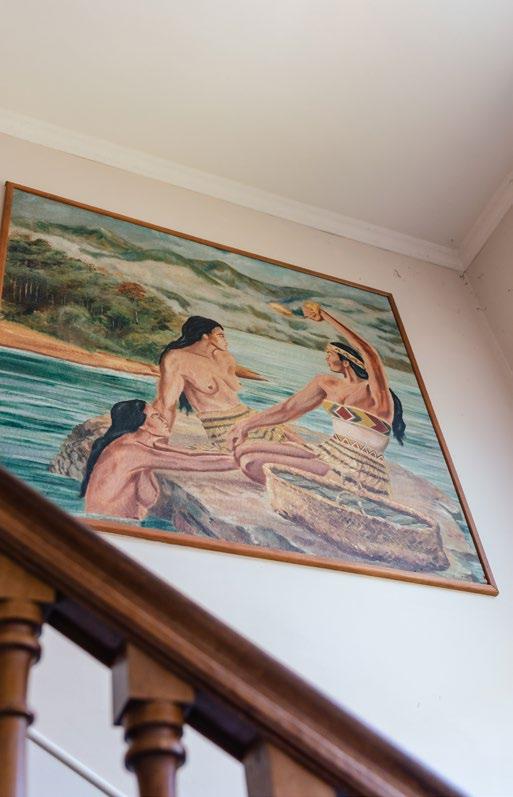

20 February 2023
1. Ōriwa’s mural depicting local stories wraps around the walls of the Canvastown Memorial Hall. Painted in 1956.
2. & 3. The halls on the second floor of the Havelock Hotel hold a collection of Ōriwa's work.
Mostly, the museums have salvaged works from old pubs that were facing demolition. And there must be more out there.
Ōriwa was born Edward Oliver Haddon at Waitōtara, South Taranaki, in 1898, the eldest son of a Māori Methodist minister, Robert Tahupōtiki Haddon of Ngāti Ruanui, and his wife, Huihana (Susan) Haerehau Shelford of Hokianga.
Around 1919 Ōriwa and whānau went to the USA on a cultural tour. They presented an odd mix of lectures, theatre and vaudeville entertainment. Ōriwa lectured on Māori life and customs. On 12 September 1920 at Billings, Montana, he married the talented pianist in the concert party, Ruihi Moringa (Marianga) Reupena of Whanganui. They were to have four sons.
Ōriwa studied pharmacy and returning to New Zealand, he “may have practised briefly in Whanganui as a chemist”. But his career soon took a different turn when in 1922 the Methodist ministry took him on, as a missionary to the Solomon Islands. But his wife’s ill health kept them at Whanganui, with a focus on Māori ministry.
Here his story accelerates, as reported on the Te Ara website: “Moringa died at Pūtiki on 4 February 1926, and on 16 February, at Whanganui, Ōriwa married Maaki Rakapa Taiaroa of Ngāi Tahu. The marriage was arranged to join Ngāti Ruanui and Ngāi Tahu in kinship. Ōriwa and Maaki were to have four daughters and three sons. Ōriwa was appointed missioner to Kawakawa in 1926.”
By 1927, his father Tahupōtiki Haddon, was recognised as the senior Methodist Māori minister. He sent Ōriwa and Maaki to Rātana pā, with responsibility for running the school there. It was around this time that Ōriwa started to build an artistic reputation.
The New Zealand Artists Annual, which published Ōriwa’s illustrated story Tiki of the dawn, described him as “our 1929 discovery”. Ōriwa was then commissioned to paint the signing of the Treaty of Waitangi. The painting was presented to the governor general, Lord Bledisloe in 1934 and hung in the Treaty House at Waitangi. However, the original appears to have been lost.
Methodist contacts were in effect when church minister Colin Scrimgeour became controller of the National Commercial Broadcasting Service in 1936 and Ōriwa got a job at radio station 2ZB in Wellington.
Ōriwa had his own programme, Ōriwa’s Māori Session, and also made contributions to others and to 5ZB - the travelling station, which broadcast from a customised railway carriage.
During the Second World War, Ōriwa enlisted in the air force. He travelled to the Pacific Islands and kept on painting and singing. His painting Māori mythology appeared in the 1944 New Zealand Artists in Uniform exhibition, and a pen and ink work, Hine Kohu and Uenuku, was included in the National Centennial Exhibition of New Zealand Art in 1940. Then he found work from the Department of Tourist and Health Resorts and Publicity to produce oil paintings for the centennial celebrations.
Ōriwa was also involved with Labour Party politics. With his return to civilian life after the war, he joined a group of Labour-allied Rātana MPs in the preparation of what became the Māori Social and Economic Advancement Act 1945.
But in 1948, Ōriwa broke up with the Rātana MPs and left the Labour Party. He retired from politics and moved to Nelson, living on his painting.
He completed eight paintings for the Commercial Hotel, Blenheim – scenes from Cook’s landing to his present. A centrepiece depicted the attempted arrest of Te Rauparaha at Tuamarina, as part of the Wairau Affray in 1843.
Ōriwa almost slowed down when he retired to Utiku, just south of Taihape, where he painted murals on commission for the local Returned Services’ Association.
The website Te Ara Encyclopedia of New Zealand wraps up his life story: “He died at Taihape on 17 June 1958 after a car accident, and was buried in the Māori cemetery at Ōkaiawa, Taranaki. He was survived by his second wife, who had not accompanied her husband on his numerous escapades, and eleven children.”
But his art lives on.
Steve Austin, director of Marlborough Museum in Blenheim is a serious fan of Ōriwa’s work. He reckons that Ōriwa should be better known, for he holds this pivotal place in our art and cultural history. “It’s important that we raise his profile. Haddon is really interesting partly because of his life before his career as an artist, and the life of his work after his death. He was very expert at conveying aspects of Māori
21
culture – through performance, radio and painting. It all adds up to a significant body of work, and one with a distinctive context.
“He lived through the time of urban drift for Māori; walked in two worlds; and interpreted aspects of Māori culture to new audiences through different media at a time when the question of what it meant to be Māori and a New Zealander, in the modern world, was challenging. ”

Steve is interested in how Ōriwa sourced his art materials and imagery. It is thought that a brewery company paid for his artist’s oil paints. Many are painted on Pinex board, a medium not designed to last.
Marlborough Museum has a number of Ōriwa’s paintings – on display and being considered for conservation work. Steve says, “Each painting represents an important part of our emerging cultural understanding as a nation.”
Through his work with Marlborough Heritage Festival and Marlborough Museum, Steve has hosted tours of Ōriwa’s work, visiting the local halls. There is also a Facebook page dedicated to the artist: Ōriwa Haddon 1898 – 1958.
Steve says, “Museums are finding ways to work with communities to promote awareness and understanding.” He has been liaising with Te Papa National Services and Marlborough District Council to ensure long-term plans for care and conservation treatment can be developed. Fragile paintings in halls used for private and community events need careful protection but awareness of their cultural value is the first step.
Ōriwa’s work has always been for the people, community and place, and in many ways, this contributes to his appeal today.
22 February 2023
Ōriwa Tahupotiki Haddon performing with singer Ana Hato, photographed by Farmer McDonald in about 1940. Photo supplied.
A seafood sensation
This year’s nineteenth annual Havelock Mussel & Seafood Festival on March 11th, held in its magical waterfront setting at the gateway to the Marlborough Sounds, is set to be a spectacular event with some exciting new initiatives to tempt attendees.

“Having cancelled last year’s festival due to Covid, enthusiasm for this year’s festival from both contributors and attendees is at an all-time high,” says the not-for-profit-festival coordinator Kara Fielding. “All the seafood producers in the region love getting behind this event and showing off their fresh produce and all proceeds go back into the local community.”
Being the Green Shell Mussel Capital of New Zealand, there will be the familiar public mussel opening competition and mussel opening Guinness World Record attempt. Over forty artisan food, beverage and craft stalls will be on hand to provide food and refreshments, with visitors being able to talk directly to the producers whilst they sample the region’s finest seafood.
An array of live musical acts will entertain throughout the day, among them Kiwi legend, the Jordan Luck Band, roots-rockers Lost Tribe Aotearoa, country singer Jody Direen, and duo Genre Fluid.
Simon Gault is this year’s renowned celebrity chef and as well as entertaining in the NZ King Salmon Culinary Tent, he will be hosting private cooking classes and judging a newly instated, NMIT|Te Pūkenga supported, master-chef style cooking competition.
Another first this year is an R18 VIP area, with complimentary seafood lunch, private bar, shade and seating.
A family-friendly event wouldn’t be complete without the NIWA children’s zone, and this year there is no charge for accompanied children under sixteen.
An abundance of shade and shelter will be provided to ensure the event can take place regardless of the weather. The local school will open up their field for self-contained campers who wish to stay overnight and there are two campgrounds available withing ten minutes of the venue. For those who can't stay, buses are available from Blenheim, Picton and Nelson to take visitors to and from the festival.
For those wanting to make the most of the occasion there is a Twilight Seafood Cruise available the night before and on Sunday, a full day Bird Watching Cruise into the Marlborough Sounds and Cook Straight to a spot that hasn't been visited before.
Festival tickets are limited and will be available right until the day, unless sold out prior. Tickets available online at www.havelockmusselfestival.co.nz. “This is going to be the best event yet, so people need to book early to avoid missing out,” she says.
23
Environmentalist in search of common ground
Meet Bev Doole, Cawthron Marlborough Environment Awards coordinator, who is working to protect the region’s natural gems through communication, community, and seeking common ground. In a podcast with Catherine van der Meulen, Bev shares her latest environmental endeavours.

24 February 2023
Bev Doole at Rarangi Beach.
Words: Megan Smith | Sarah Brown
Bev is no stranger to Marlborough. She grew up on a two-hectare property in Tua Marina. Her parents Alice and Gordon were teachers who also grew fruit and vegetables for market. “I spent my childhood trudging around in gumboots, hoeing sweetcorn, picking plums and harvesting onions for seed,” she says.
Growing food and being connected to the land is fundamental to who Bev is. However, the journey to her involvement in the Environment Awards took shape over time. At 17, Bev left home to pursue a career in journalism. “Sheila MacMurray, my Latin teacher at Marlborough Girls College, would talk about life in general when we got tired of conjugating verbs. I remember her saying, “Bev, you don’t suffer fools gladly. Consider journalism rather than teaching.”
Six months spent at a community college in San Jose, California, led to Canterbury University and a oneyear journalism course at Wellington Polytechnic. Bev worked for Radio New Zealand, the Evening Post in Wellington and then the Financial Times in London. After 30 years away from Marlborough, family reasons brought her back home in 2008. “After being away so long I saw Marlborough through different eyes and realised how special it is and how lucky we are. There’s the Sounds, the Wairau River, the hills surrounding us and the wide-open views from Rarangi Beach.”
At the same time, Bev was concerned about the loss of diverse cropping and farming land as vineyards expanded, the spread of forestry and the effects of harvesting, and the expansion of salmon farming and the pollution it causes.
“I guess I felt more strongly about the environment when I got back because I appreciated it more. This made me want to find ways to help look after it.
“I adapted my journalism skills to broader communication about environmental issues. This led to my favourite project of co-ordinating the Marlborough Environment Awards.”
The Awards are held every two years and showcase real-life examples of businesses and community groups doing good environmental work. There’s always a broad range of projects, and the 2023 entrants include Rai Valley school children monitoring stream health, an autonomous vineyard tractor, and a mooring system that reduces seabed damage.
“The role of the Awards is to tell the entrants’ stories and use them to educate and inspire others,” says Bev.
She is curious about how people adapt to our changing world, particularly the environment, climate change, and increasing ocean temperatures. “We may
be aware of it, but I’m surprised by how slow our reaction is. I wonder if it’s because we’re waiting for the Government or Council to do everything?
“I’m interested in finding people who are getting on with it themselves, whether through community groups, a company, or an industry – and there are great examples of these in Marlborough. Heaps of people are trying to hold the line and improve the environment. We want to hear their stories and acknowledge their efforts, especially the hard work being done by volunteers.
“The same applies to businesses who look at the bigger picture and want to do better - they understand that it shouldn’t just be about the bottom line and increasing shareholder value. They understand that they have a responsibility to the environment that they depend on for their business. They’re not doing it just for themselves, but because they want to improve the world around them.”
The Awards have recognised some great examples of that, such as carbon reduction at Lawson’s Dry Hills Winery, the zero-waste approach at Pinoli Pinenuts and SWE’s emphasis on conserving water. Bev is committed to finding more. “We’re all invested in the environment, good air, clean water, healthy biodiversity. And we can achieve more by sharing experience and working together.”
She welcomes the Marlborough District Council’s new Economic Wellbeing Strategy as a progression from the previous Economic Development Strategy. “The word ‘Wellbeing’ is intriguing because it brings in the environment more. A new website is being launched as part of the strategy and Council has funded videos of each of the Awards entrants to be shown on the website. We are keen to contribute to the idea of a thriving environment and economy.”
Bev reckons it is time to be open to doing things differently. “Living with uncertainty, adjusting to pandemics, climate change and economic volatility, it’s time to reassess what’s important. We can’t continue doing things the way we’ve always done them.
“For any sort of future, we need to work in balance with the environment, not against it.”
The Cawthron Marlborough Environment Awards will be held at the Marlborough Event Centre on April 20. Visit www.cmea.org.nz for more information.
Hear more about Bev Doole and other environmental guardians via Catherine van der Meulen’s ‘Entrepreneurial Women with Purpose Podcast.’ entrepreneurialwomenwithpurpose.com
25
Be kind to yourself
Sarah McGuinness is a wellbeing disruptor, burnout awareness advocate and Founder/CEO of Revolutionaries of Wellbeing. ROW helps wellbeing leaders to be change makers and to create better workplaces, together.

Sarah draws on her honours degree in psychology and degree in communication, training in health behaviour, coaching, fitness and facilitation, plus a 15+ year career in the corporate sector specialising in leadership and organisational development in Australia and New Zealand. She is a passionate mental health and wellbeing champion, who grew up in Nelson before embarking on her career. Sarah kindly wrote this piece for Marlborough Magazine about the importance of looking after yourself.
There’s no doubt that life has thrown us some curveballs recently. The pandemic continues to impact many aspects of our lives, from the cost of living to business impacts, to our health and wellbeing. It’s no wonder many of us feel tired.
It’s quite telling that more and more retail stores have a ‘please be kind to our staff’ notice on the door. This time of year is typically pressured, but the impact of Covid lingers and people are desperately trying to hold it together to get through.
Of course, many challenges to our wellbeing predate the pandemic. So why does looking after our wellbeing suddenly feel so hard and what can we do about it? And with the number of articles on the web and experts and influencers you could consult, surely wellbeing can’t be that hard…. right?!
Well, as you’ll know – it’s not quite that straight forward. We don’t exist in a vacuum. In our quest for wellbeing, it’s easy to think that we’re at fault for somehow not being able to keep up with what’s expected of us.
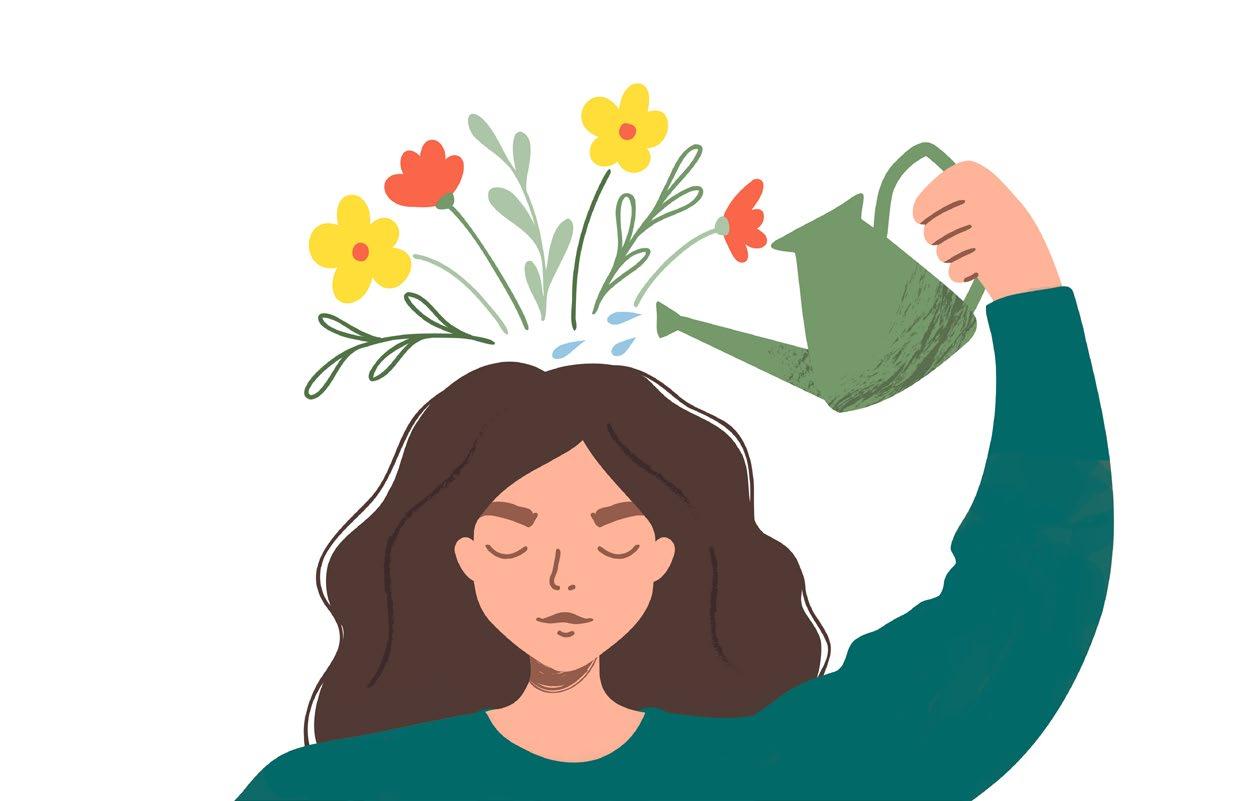
As a society, our values have shifted, and we have prioritised work as being essential to prosperity. We value constantly ‘being productive’ over being at leisure. Leisure time is often positioned (and marketed) as a luxury.
Work has become more accessible with technology; we have less boundaries between work and home life. In this Covid world, this has become even more blurred as more people work, live and manage life from home. We also live in an almost infinite world. It will almost never be possible to stay on top of the emails, current events, and social media. The brain can only cope with so much information and it is easy to become overwhelmed.
We’re also balancing our commitments to generations older and younger than us, financial responsibilities, biological changes associated with ageing, social pressures, and more.
Of course, not all these things are negative. Many are positive experiences. The difference is the sheer amount that we’re juggling.
And I say this as someone who has been there, done that and got the scars to prove it. I burnt out spectacularly in 2020 and spent 2021 recovering. It was a long, slow journey to get well, and I learned the hard way why being proactive about your wellbeing is so important. It’s easy to fall into the busy trap, but much harder to climb out of if you leave it too late.
So what does good wellbeing look like? In our work, we like to ask, “What does a good day at work look like for you?” Or, if you’re not working, simply “what does a good day look like to you?” When we ask people these questions, they tell us things like “I have control over my day”, “I spend time with great people”, “I have purpose”, or “I feel calm and not stressed”.
These are the things that make people feel better. It’s what it means to be well. You can ask yourself that question: “what does a good day look like to me? What would I be doing, or what would I be thinking or feeling?” You can also try this exercise asking yourself: “how satisfied are you with life right now on a scale from 1 to 5?”.
This is a great question for thinking about the different parts of your life (work, social life, relationship with loved ones, opportunities for learning and growth, time to do what you love (e.g. hobbies) and so forth), and your life overall.
We can be doing well in one area of life, say relationship with loved ones, but be under financial strain at the same time and this can impact our overall wellbeing. These different areas are distinct, but inter-related. For example, your mental wellbeing can be affected by a physical illness or injury that is preventing you from living your life to the fullest.

The life satisfaction question exercise is beneficial for two reasons: firstly, it allows you to purposefully reflect on the different aspects of your life and how you’re travelling. Secondly, it’s great at keeping you accountable and honest. Self-knowledge is a great starting point to understanding what’s truly driving your positive or negative wellbeing. Life satisfaction is a key part of wellbeing. It’s a long-term evaluation of life and perhaps not surprisingly, there is a link between lower life satisfaction and wellbeing challenges like burnout.
Wellbeing is a continuum, one that we move up and down every day based on all that’s happening around us and our responses to those things. It’s also not just about the absence of a negative (i.e. stress, anxiety, etc); it’s about creating the conditions that allow you to flourish and be at your best. But to do that, we need to start from a place of self-knowledge and self-care.
27
Here are our broad self-care tips:
1. Proactively develop a sense of who you are – take some time over summer to reflect on the year that’s been, and where you’d like to be this time next year. You can use the questions about a great day or life satisfaction to give you a guide. Consider what’s important to you, and what you’d like to stop, start or continue doing.
2. Be deliberate about what you do next – just like we don’t expect an Olympic athlete to be race-ready every day, consider when you’ll need to be ‘raceready’ during the year (eg when there might be times of high pressure) and when you can schedule in times for recovery.
3. Much of wellbeing is mundane and boring, it’s the micro decisions we make every day. Consider the tiny decisions you could make each day that will make even the tiniest difference to tomorrow. It might be eating an extra vegetable, or calling a friend, or sitting outside for lunch.
And here are some tips for right now:
6. Be right here, right now. Practicing mindfulness is probably the last thing you’d think to add to your festive to-do list, but it can be a helpful calming tool if you feel overwhelmed at any point. Mindfulness is about living in the moment and taking note of what’s happening. Examples include using your five senses to enjoy the foods on offer, watching the sun on the water at the beach, and being present with loved ones. A great way to pause is to take a really deep breath, exhale and let your shoulders drop.
7. Know that good enough is great. There can be a lot of pressure at this time of year, especially when hosting or staying with family and/or friends. Unfortunately, there’s no quick fix when it comes to dealing with difficult people but what you can do, is focus on you. Be clear about what you can control and what you can’t, and what’s important and what’s not. By February, many things that are stressful now will be long forgotten so give yourself a break and know that good enough is great.
8. Be with people who love you in all your glory. There’s almost nothing better than spending time with people who love you for who you are and can make you laugh until your sides hurt. Find time to be with those people and find ways to help each other take care – be it a walk together, joining a festive activity or simply sitting down over a cup of tea to catch up on life. There are lots of other great people you can talk to in your community too.
Giveaway
4. Respond to setbacks as opportunities for growth. Make a date with yourself when something doesn’t go well. Consider, what happened? What influenced how I feel and what I’m thinking? How did I behave? Was it ok or could I have done something differently (with the benefit of hindsight)? What positive do I need right now to feel better? Who can help me? What do I need to do? When you’ve answered those questions, you’re ready to put your new mini-plan into action.
5. Acknowledge what you’re already doing. Often, we end up looking for the magic answer to our wellbeing challenges, but there will be many things you’re already doing that will be making a positive difference to how you feel. Keep doing them too. After all, you’re the expert in you.
9. Celebrate the goodness. When you get a chance, write down a list of all the good moments from recent years. It might be a list of big things, small things or both. The idea is to come up with 10 to 20 things that make you smile and feel buoyant. And those things can be personal and professional. My highlights include all the awesome people I’ve worked with around the country and of course, the time I’ve spent with my family and friends.
10. Support the community. There are many families that go without in some way. Donate your time or items to organisations that support families or individuals in need. Or if you know of someone, reach out to them in whatever way feels comfortable to you and to them. Check on neighbours and colleagues too. To quote the Mental Health Foundation, “Seeing yourself, and your happiness, linked to the wider community can be incredibly rewarding and creates connection with the people around you.”
Take care, stay safe and wishing you a happy year ahead.
We have a set of self-care cards to give away. Created by ROW founder Sarah McGuinness, this gorgeous pack of self-care cards contains 30 easy ideas for creating five minutes of awesomeness in your life. To be in the draw to win email hello@topsouthmedia.co.nz with ‘self-care giveaway’ in the subject line by February 28.
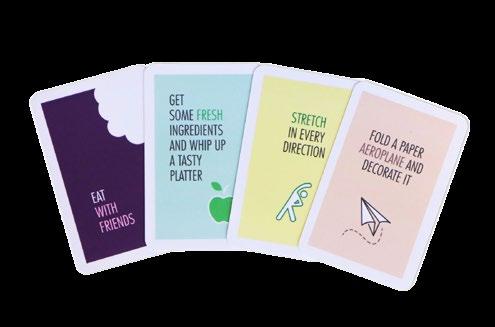
28 February 2023






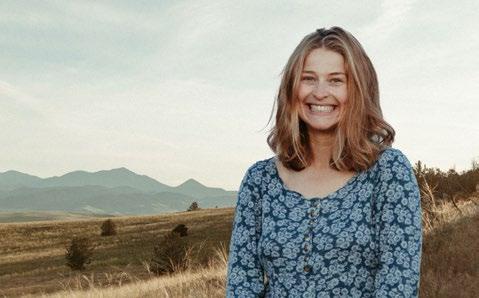
Self-care guide
Managing menopause
Menopause officially occurs when a woman stops having menstrual cycles altogether. However, the process of getting to that point can take a long time.

Dr Marissa Kelaher shares some tips to help manage symptoms.
Perimenopause and menopause are times of massive changes in a woman’s life but often are not talked about much, meaning many women may suffer in silence for years before seeking help.
They refer to the transition that occurs when a woman’s ovaries gradually slow down, and levels of oestrogen, progesterone (and to a lesser extent testosterone) can fluctuate for months to years, before eventually dropping to low levels - then periods and fertility stop. It’s a natural process, yet with women often juggling family life, careers, and other responsibilities during this time, it can be challenging.
Yet on the flip side, educating and empowering women about menopause can have huge benefits.
Perimenopause is when hormone levels fluctuate, yet ovulation and menstruation still occur.
Menopause is once these have stopped (usually defined as no period for 12 months).
Traditionally it was thought women only got symptoms during menopause, and these were limited to hot flushes and night sweats. Yet we now know both perimenopause and menopause can cause a huge variety of symptoms, including mood changes, migraines, palpitations, joint pains, brain fog, poor sleep, weight gain, hair loss, dry skin, inflammation, urinary symptoms, low libido, and vaginal dryness. Which makes perfect sense when you think that hormone receptors are present in almost every cell of a woman’s body.
Menopause also increases the risk of other health issues, such as heart disease, dementia, type 2 diabetes, high blood pressure, osteoporosis, and depression, so focusing on health then is vital. Fortunately, with the right tools, women can thrive through menopause and beyond.
Diet is key, as it helps symptoms and reduces the risk of future health issues.
An anti-inflammatory whole food plant-focused diet is recommended, it improves health, and helps hormonal symptoms.
This also protects the heart, brain and bones; reduces inflammation; optimises immune health and metabolism; and boosts our gut microbiome.
Try:
Swapping refined carbohydrates (‘white’ carbs) for whole grains.
Avoiding ultra-processed foods and limiting added sugar as much as possible.
Swapping saturated (animal) fat for unprocessed/ minimally processed unsaturated (plant) fat, such as seeds, nuts, avocado, and olive oil.
Limiting fat to 30% of calories.
Eating legumes, seeds and nuts daily.
‘Eating a rainbow’, of 5+ servings of colourful veges per day, and 2+ servings of fruit.
Having daily omega 3 rich foods (essential for brain, heart, and immune health), this can be found in oily fish, flaxseed, walnuts, chia seeds and hemp hearts.
Getting enough B12, iron, folate and iodine (important for energy, mental health, thyroid and hormonal health).
Including lean protein at every meal, ideally mostly from plants (legumes, nuts, seeds etc) to balance blood sugars and energy and build muscle. Women need more protein after menopause (around 1.2g/ kg/day).
Health
Gut health also plays an important role in hormonal health, so feeding your microbiome (gut bacteria) with lots of fibre (aim for 30 different plant foods per week, and at least 30g fibre per day) as well as probiotic (fermented) foods will keep your gut bugs happy!
Phytoestrogens are worth mentioning, these are plant compounds which mimic oestrogen.
They’re found in high levels in soy, flaxseed, sesame seeds, legumes, whole grains, peanuts, and tea. Try to include them in your diet regularly, as they can help with menopause symptoms (especially hot flushes, brain fog, and poor sleep), improve bone health, and reduce the risk of breast cancer and heart disease.
Soy in particular is effective in reducing the risk of breast cancer, as well as reducing recurrence in breast cancer patients it may also help hot flushes. Soy contains isoflavones, the compounds found in red clover extract (a popular menopause herbal supplement).
Calcium is important for bone health, and women need more (1200mg per day) after menopause.
Dairy alone isn’t particularly protective for bones, so its best to get calcium from a variety of sources, including tofu, green leafy veges, seeds, and legumes.
Vitamin K is also needed for bone health, dark green leafy veges are rich in this (they also help brain and heart health and inflammation.)
And lastly, vitamin D is crucial for bone health this is made from sun exposure, so take a supplement if you are mostly indoors, (during winter you cover up your skin), or if you are darker skinned.
Alcohol increases the risk of many cancers, and can negatively affect heart and brain health, as well as sleep and mood. It’s also a common hidden cause of weight gain. Try limiting to 10 units per week at most, the less the better.
Caffeine may worsen hot flushes and poor sleep, so try cutting down or switching to decaffeinated coffee if you suffer from these.
Time-restricted eating may help with weight loss, blood pressure, cholesterol and blood sugars. This means aiming to eat your meals within a 10-12 hour window. It’s not recommended if you are malnourished or have a history of eating disorders.
In summary, aim to eat a variety of colours, fibres, whole grains, lean protein, unsaturated fats, whole plant-based foods, foods rich in calcium and which optimise your gut health. Your body will thank you for it.
From an exercise perspective, strength training is particularly important for menopause, as women
progressively lose muscle from age 40. Muscle is vital for immune health, metabolic health, and bone health. The drop in oestrogen during menopause also means women can become more insulin resistant (increasing diabetes risk), and muscle helps regulate blood sugar, too. Muscle is also helpful to increase metabolism and counteract the weight gain that’s common from perimenopause onwards.
Aim for strength training 3-4 days a week, alongside cardio, flexibility, and balance exercises. You don’t need to bulk up or join a gym - just aim to work all the muscles in your body regularly!
Sleep and stress are important, as hot flushes worsen with stress and sleep deprivation affects blood sugar levels, mood swings, brain fog and weight gain, and increases the risk of other health issues.
Ironically, these can be a challenge in menopause, as estrogen and progesterone improve mood and sleepso when levels drop it can become a vicious cycle.
Sleep disturbance can occur even without night sweats, too.
Some tips to keep in mind:
Keep your bedroom cool and dark, consider a fan.
Wear light, natural clothing to bed.
Switch off electronic devices at least one hour before bed.
Aim to get up the same time each day and get outside in the morning daylight for at least 20 minutes to help set your body clock, or sit close to a window with natural light. This helps regulate sleep cycles.
For stress, practices such as slow breathing, meditation, yoga, and exercise help to ‘turn down’ the stress response and improve sleep and menopause symptoms. Even 5-10 minutes a day helps. Try be kind to yourself and allow at least 30 minutes a day to do something you enjoy, that’s just for you.
And if you’re still struggling despite lifestyle changes, or symptoms are severe, Hormone Replacement Therapy (HRT) can help. The new body identical forms of HRT (oestrogen patches and utrogestran) are extremely safe and effective and can make a huge difference to symptoms and quality of life.

The key to healthy menopause is truly understanding why changes are occurring and feeling empowered to be able to do something about them.
Dr Marissa Kelaher is a GP and lifestyle medicine doctor. She runs health courses and offers oneon-one consults at yourlifestylemedics.com
The key to healthy menopause is truly understanding why changes are occurring and feeling empowered to be able to do something about
them.









Complimentar y consultation Personalised treatment plan Smooth, Plump & Contour with ENHANCE YOUR FEATURES FOR A REJUVENATED AND NATURAL LOOK 14 Market Street , Blenheim caci co.nz *T&Cs apply Long lasting results Expert Injectors, market leading products Limited time offer: Sign up to one of our memberships and receive a Skincare starter kit valued at up to $157!* 03 577 7555
New Year, new you? We got you
Words:
Do you ever notice the time you spend in your head? The constant stream of thoughts, information, and that never-ending to-do list?
What if there was a way to feel differently?
As humans living a human life, we have moved far away from the wisdom of our bodies, sometimes to the point of being unable to feel and notice physical signals such as pain and discomfort.
If we don’t feel, we lose connection to all the information that is available to us through the body. When this happens, we then lose the ability to meet our own needs, and the needs of others.
Welcome to EMBODY, a new column on wellbeing from the team at EMBODY Studios. We’re here to give you the space, time and freedom to care for yourself in this busy world, and to share our love of movement, community and plants!
Let’s start by thinking about the nature of embodiment. What does it mean? How do we achieve it? And most importantly, how can we capture the magic of embodiment to enrich our daily lives?
What is embodiment?
Our minds and bodies are not separate systems; they affect each other directly. Anyone who does high intensity exercise will tell you how it affects their mood and mindset.
Have you ever noticed the physical feeling of excitement, that squishy feeling in your belly? Or the feeling of anxiety, as a tightness in your chest and throat? It was likely a thought that created that physical sensation.
Embodiment is the ability to sense the fluctuation of bodily sensations. It allows us to process thoughts, emotions and excess energy through our physical body. To practice embodiment is to create mental space, to invite your body to tell its story.
The challenge lies in the mind, allowing you to be open, trusting and present to what is here within you right now. If you would like more peace, clarity and reassurance that all is ok, a regular embodiment practice may be worthwhile trying.
A short embodiment practice
1. To begin, make sure you are comfortable where you are sitting.
2. Take a full breath, in and then out. (Here’s where your ‘thinking mind’ comes in and attempts to make you believe this is all airyfairy, and a waste of time. Thank your mind for its input, and continue!)
3. Take another breath. If it feels ok for you, close your eyes.
4. Turn your attention to your physical body. Of your feet on the floor. Your hands resting in your lap.
5. Allow your shoulders to relax, your belly and eyes to soften.
6. Place your hand and put it on your heart or your belly, or both. Just notice your presence, your being, right now, right here. Take your time to simply appreciate this moment.
Why practice embodiment?
Whenever I make myself do this simple practice, almost immediately I notice a shift in my physical and mental state. Even so, I am rarely able to practice embodiment without first feeling resistance! So, if that was your experience, it’s ok. It’s hard for our constantly busy minds to stop, even just for a moment. But the more we practice the easier it becomes.
It has taken me years to begin to understand embodiment and how even brief moments of embodiment are beneficial to my wellbeing. Embodiment practices ultimately allow us to know ourselves better and to be able to respond to any situation with skill.
There are many ways to practice embodiment – breathing, yoga, pilates, dancing, running, swimming, singing, meditation… Whichever you choose, know that these short moments lead to profound changes in your body and mind.
If you would like to be guided in your embodiment practice, our teachers are here for you. Visit our website to learn more embody-studio.com
Kate is a mother, yoga teacher, physiotherapist, and advocate for wellbeing. She teaches Yoga at Embody on Wednesdays at 5.30pm.

33
Kate McNabb.
A life-changing set of wheels
Kim and Dave Morrison’s lives turned upside down eight years ago when David had a brain aneurysm. At only fifty-two and a fit, healthy deer farmer who loved the outdoors and went hunting and fishing whenever he could, the change was devastating.
“Eventually we were able to get back to our land on the West Coast for visits but trying to get through the paddocks with a normal wheelchair wasn’t easy,” says Kim.
Meanwhile, in 2010, a humble inventor, Peter Thompson, put his engineering experience and the best of kiwi ingenuity to work and built a multi-configuration outdoor terrain wheel-chair, determined to give his wife Ginny the freedom to continue to go on adventures following a stroke.

“We had loved the outdoors and I wanted to find a way to take Ginny back to the trails, rivers and parks we had so enjoyed. It was something we both needed for our mental well-being,” he says.
He named it the ViMo, meaning Vitality in Motion. It was light and easy to manoeuvre while being safe, sturdy, very comfortable and able to go places a conventional wheelchair couldn’t.
“We heard about Peter and Ginny’s story and it resonated so much with ours,” says Kim. “We were able to loan a ViMo to try out and quickly realised the opportunities it could give us to get some of our outdoor lifestyle back. Although David won’t be able
to shoot again, his friends are able to take him on hunting trips and fishing trips so he can still enjoy the camaraderie,” she says.
Meanwhile, Peter’s invention has been so sought after that he has been building the life-changing wheelchairs ever since.
Terry Gee who is an Occupational Therapist, has no hesitation in calling him a genius. “He is so humble and innovative,” she says. “To come up with a world-beating design like this is extraordinary.”
Every ViMo is customised as Peter refines and designs them according to what people need. The wheels can have motors and users have a joystick so they are able to drive themselves. They are so transportable that I can fit three in a Suzuki Swift,” says Terry. “I have seen people with short and long-term disabilities as well as those in palliative care get so much happiness from being able to explore the outdoors again.”
“The business is still at the development stage, but the joy it gives me seeing people aged from six to ninety-six having their lives changed keeps me going. I was determined something good needed to come out of losing Ginny,” says Peter.
The Morrisons are so grateful. “I love fishing,” says Dave who now can regularly go surf casting thanks to his primo set of wheels. “It has given him a wonderful sense of freedom back,” says Kim.
vimowheelchair.co.nz
34 February 2023
A ViMo has been life-changing for Dave and Kim who enjoy getting into the outdoors.
FASHION STYLING ADVICE
Buying like a boss
When styling clients, or going shopping myself, I have a few rules that I follow to make sure the experience is worthwhile, and I find pieces that work, and I love.
These rules are not a replacement for determining the shape or silhouettes you feel and look best in, or as a solution on what you want your style to be, but can help prevent regrettable purchases and will generally allow you to have more fun creating interesting, different looks.
Shop with a plan
Have a list of clothing items you’d like to purchase or need for the current or up coming season. This alleviates aimless shopping where you can end up with a wardrobe full of things that don’t go together, or you’ll never wear. When shopping ask yourself what will I wear this with? Does this piece capture the essence of what I want my style to be?
Try things on
Even when you feel they may not work. Sometimes garments that look odd on the mannequin or hanger can look great on a real body. Let common sense prevail as you will know what does not work here,
but I always encourage clients to try something completely different or outside their comfort zone. Often to their surprise it’s a fresh new look that makes them feel fabulous.

Stick to your lane
Don’t fall for the myth of variety, or purchase because its different from everything else you own. We tend to have a lot of items in our wardrobe that resemble one another in style. That’s ok as it’s what you like, matches your personality and works for you. Add variety easily by experimenting with new colours in your palette or interesting accessories. If you do purchase something quite different make sure it fits into the context of your style so that you will actually wear it.
Trust a friend
Have a good shopping friend, someone that knows you well. Whether its family, a partner, friend or a stylist. They don’t have to necessarily go shopping with you but it’s good to have honest, helpful feedback. Take photos of your outfits as this can help you to look objectively at proportion, shape and colour.
Most importantly, have fun and enjoy the process.

35
with Michelle Bradley, personal stylist.



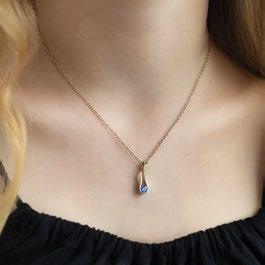
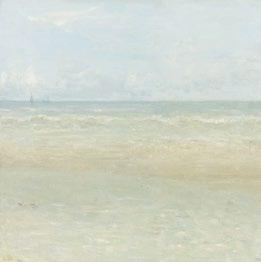













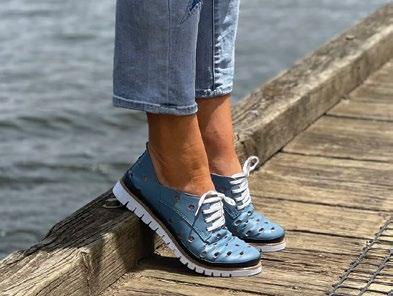
ON THE STREET
Self-taught makeup artist and conscious clothing creator Lauren Bishell certainly has an eye for the latest trends. Lauren shares with us what she’s loving at the moment and her favourite fashion tips.
What are you wearing today?
I’m wearing my own brand today, Loz Marie the Label. This dress is called the Alex Dress and I’ve paired it with my La Tribe sandals and an oversized men's shirt I bought from the op-shop years ago.
What is your style?
I would say comfort with a bit of edge. I gravitate towards basics that have some kind of interesting detail. I live in black.
What is most of your wardrobe made up of?
To be honest, activewear and ribbed dresses. Comfort is my priority. I love dressing activewear up and making it more ‘street’.
What are you loving at the moment?
I’m loving long, tight maxi dresses and oversized shirts, worn unbuttoned.

Where do you buy most of your clothes from?
I love STAX. They are an activewear brand but are moving more into streetwear, and I’m here for it. I also like to buy pieces second-hand, that way they aren’t everywhere and have a bit more originality. It’s also kinder on the environment.
What is your approach to shopping?
Buy good quality basics that you can pair together in heaps of different ways. If I can’t think of five ways to wear an item when I’m shopping, it’s not worth my money.
What is your all-time favourite purchase?
Probably these La Tribe sandals or a denim jacket I bought years ago from Zara. Every time I wear it people ask me where it’s from, so it must be good!
What has been your worst clothing disaster?

Does anyone remember those shear dresses from Glassons? I used to have a pink one and would wear a tight, floral, skimpy slip underneath… Not my best look.
What wardrobe item should everyone invest in?
A well-fitting blazer and a good pair of jeans. Once you find them, buy them in every colour. I have the same style in four colours.
Do you have a style rule you always obey?
Less is more, in my opinion.
If you could raid one person’s wardrobe, who would it be?
Matilda Robinson - she’s an Australian influencer and I’m obsessed with her style. Or Kim K, imagine the pieces you could choose from!
Finish this sentence – You would never catch me wearing…
I used to say Crocs but now I own a pair!
Sarah Brown
My HOME
Tucked away in wine country is Jess and Dean Fielding's home, and bed and breakfast. After several years of living in a caravan and building, the family are especially enjoying life in their piece of paradise. They share their newly built home with us at Marlborough Magazine.
Sarah Brown
Where is your home and how long have you lived here?
We are located on Middle Renwick Road, near the Westwood shopping area. We are lucky enough to have a half-acre section, we had just moved into a caravan on site when Covid hit. It was a bit stressful owning a tourism business, and we weren’t sure what would happen. But we managed to get our house built and have been living in it, and slowly finishing it off since August 2021.
What do you love about the neighbourhood where you live?
We have a gate that opens on to Sheps’ Park, so it’s easy to take the dog directly through for doggy playdates. We have nice neighbours and it’s a great location near the shops.
What four words would you use to describe your home?
Inviting, entertaining, warm and cosy.
What’s your decorating style?
I like crafty projects, so have a few comfy chairs that are waiting to be recovered in the winter. With kids and a dog around, we haven’t really brought new furniture as it will probably get trashed, so will wait to upgrade to pieces we really love.
What piece would you never part with?
I always wanted a large dining table for entertaining, and now we finally have a black-stained, oak, eightseater table, which I had to wait nine months for because of Covid. We are still yet to get matching chairs, and it has an ugly sheet of clear plastic over it until our daughter is a bit older and won’t paint it…
ABOVE: Jess and Dean with their daughter Aleisha, and Luna the dog.
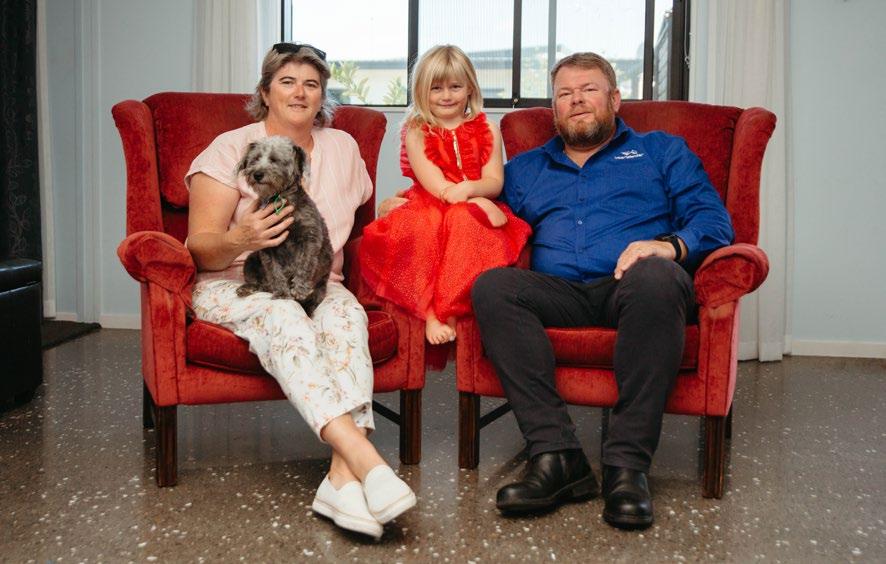
38 February 2023
When it comes to homeware, do you save or splurge?
I love cooking and have loads of gadgets for cooking, when I have time to cook.
Which items or fixtures did you splurge on and where did you save?
We splurged on a couple; the built-in coffee machine is a luxury, and the Lucy G splashback – it’s a beautiful piece of art.
What’s next on your interiors list?
We haven’t really had much time to personalise the inside of the house as we have been focused on getting the Bed and Breakfast running, and ensuring the outside areas and garden looks good. It will be nice to finish off a few things inside to complete the look.
What’s your favourite spot in the house?
When we built the house, I wanted a covered outside area for my hanging basket chair. So, we built an extended gable off the front of the house, facing north. I don’t often get a chance to sit there during the summer as we are so busy with Marlborough Wine Tours and Marlborough Wine Country B&B, but its lovely to sit there on a fabulous sunny winter day.
What should every home have?
Family and friends.
What is one thing you would change about your home if you could?
This house was built with the business in mind, so it’s all about practicality for parking vehicles. The large volume of concrete does cause a big heat sink in summer, so we would re-think how to do that better.


39
1 2
1. Jess especially wanted somewhere to hang her egg chair (right) and enjoy the outdoors. 2. Partially covered decking extends down the side of the house. The home allows for plenty of natural light to fill the rooms 3. The outdoor living area and fire were a must for the couple who enjoy entertaining. 4. David Trubridge light shades feature above the dining table. The Lucy G splashback is 'a piece of art' in the kitchen.
Best budget tip?



Don’t think a set budget will help when you build! It is only a guideline and doesn’t include all the extras and landscaping required.
Best money spent?
We have invested in solar panels through the Marlborough Council Rates Scheme. As we have a lot of guests washing, using hot water and heating/air conditioning, the panels are paying themselves back very quickly.
Do you have any tips on how to keep your living area orderly?


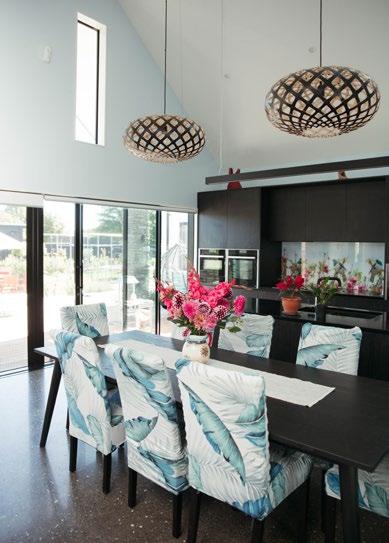
No, you’re asking the wrong person! With a preschooler, a dog, and a busy life, I don’t stress too much, it is usually very homely.
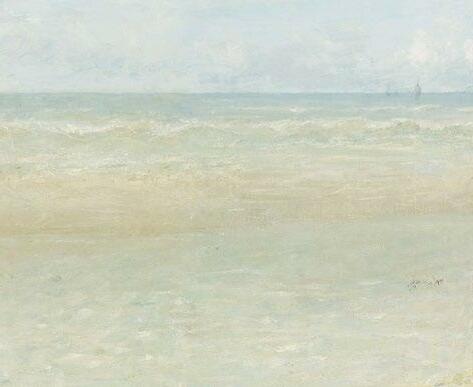
3 4


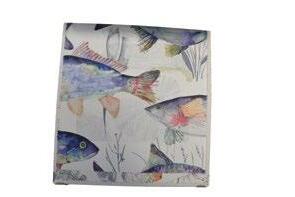


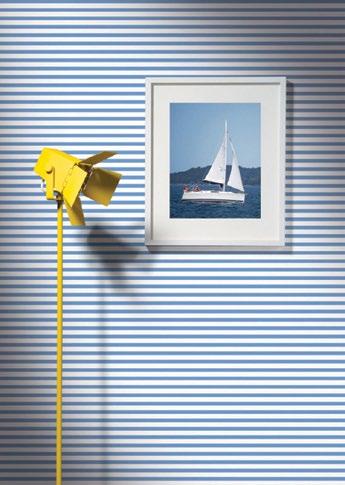












What’s Hot Interior
Cooper Parakai
Home Interior Trends with Laura Tyser
- Owner of Indoor Botanicals

Expand your pot plant collection with propagating
Propagating houseplants is the cheapest way to expand your indoor botanical collection. Not only will this boost your interior plant aesthetic, but will also allow you to easily duplicate your favourite plants. The best time to propagate your cuttings is early spring through summer as this is generally the growth period for houseplants. There are many ways to propagate, here a few ideas to help you.
Take cuttings
Taking stem cuttings is the easiest propagation method. Some of the popular houseplants to do this with are pothos, philodendron, monstera, and syngonium varieties. Using Philodendron Micans as an example; cut sections of the main vine so it has the leaf, stem and node included. Using the newest growth is best and most likely to take. Put your cuttings in water until they sprout roots. You can use any glass vessel including jars, bottles, test tubes, or drinking glasses.

Leaf cuttings are another alternative, and Begonia, succulent and watermelon plants are good examples for this. You can simply put a watermelon leaf, with its stem, in water and it will grow roots and new shoots. Water propagating is the easiest method, but I also use sphagnum moss and fern fibre.
Cuttings can be left to grow in water (just change the water regularly to keep it fresh and clean) or can be planted into soil once they have a good root base.
Plant division
Plants that can be multiplied using this method include the peace lily, snake plant, zz plant, and calatheas. Gently remove the plant from the pot, then remove the soil to see the roots. Tease the plants roots apart to create separate ‘sections’, which can then be repotted and grown as another plant.
Grow from runners
Some plants produce their own plantlets (pups or babies) and once roots have developed on these they can be transplanted into soil when they are big enough. This method, however, is specific to certain plants such as the spider plant, strawberry begonia, and some ferns, for example.
Air layering
Air layering is a good way to propagate as there is a low risk of losing your cutting. Air layering utilises the nutrients and energy from the mother plant to promote root growth, and you end up getting strong and healthy roots quicker. Air layering doesn't work for all plants. It is easiest to do with philodendrons and monstera, as those plants generally throw out aerial roots. Find a node (a bumpy bit in the stem where new growth appears) and wrap it in moist moss, using clingfilm to keep it all together. Not too tight, just enough to loosely contain the moss around the node. Watch the moss does not dry out and wait until you see enough roots to then be able to cut below your node and plant your new plant. Go forth and multiply… Gift to your friends or add to your collection.
42 February 2023
February gardening guide
Enjoy one of the hottest months of the year and the best harvest period in your garden. Finally it’s time to really reap the rewards of work from last year. But the work never stops, here are a few ideas for what you can get up to in the garden in February.


In the vegetable patch:
Keep on top of the harvest. Frequently harvest zucchinis before they turn into marrows. For the best flavour, harvest sweetcorn the day you want to eat it, and when the tassels have turned brown. Continuously pick herbs and other greens to encourage new growth. Pick cherry tomatoes as they ripen, each day you will be surprised at their rapid colour change.
• A number of your summer crops will be coming to an end. Pull out spent plants, add them to the worm farm or compost, and prep the soil again. Add plenty of compost and/or sheep pellets. Any plants that have gone to seed can be left in the ground. Wait until they dry out and you can harvest their seeds.
This month should deliver long days and warm nights, meaning fast growth in the garden. Make the most of this and get your slower-growing winter crops in the ground now. Plant carrots, parsnip, leeks, cauliflower, rocket and cabbage. Keep the water up to them.
• When watering in hot and dry conditions, do a deep water every few days. This is more beneficial than short shallow waters every day. Water early, or late, in the day.
In the fruit garden:
Keep fruit tree roots moist with a layer of mulch around the base.
• Peaches, plums and nectarines should be ready to harvest now. Cover with bird nets when they begin to ripen.
• Preserve excess fruit supplies to enjoy later in the year.
• Harvest rock melon when the stem begins to break away from the fruit.
In the flower garden:
As flowers finish, dehead and fertilise. This will help bring on autumn flowering.
Be vigilant with aphids and whitefly, spray with a suitable insect spray.
In trays, sow seeds of pansies, violas, calendulas and dianthus. In the garden, directly sow alyssum, poppies, cornflowers, stock and sweet peas.
• Once the soil cools down a bit, plant springflowering bulbs such as daffodils, jonquils, freesias, irises, lachenalias, Sparaxis, babianas and ixias. Ensure you place bulbs in the fridge 4-6 weeks before planting.



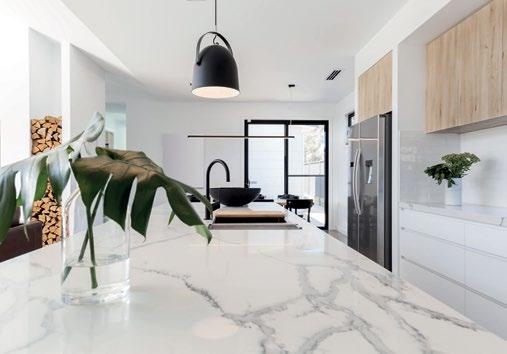

Your local home renovation specialist 0800 33 60 33 www.refresh.co.nz
Nita Craig
A renovation evolution
What started off as a simple repair, ended up in an almost complete rebuild. To ensure the beloved Bach near Havelock continued to withstand the test of time, the completed upgrade is nothing short of spectacular, as Adrienne Matthews finds out how.
 Laura McCone
Laura McCone
The owners of a bach near Havelock summoned a builder to take a look at a section of the building’s floor which was uneven, assuming it would be a simple repair.
Builder, Daniel Morton, from Morton Building was as surprised as they were at what he uncovered.
“The rot in the floor was so much worse than we’d anticipated, and so the option was put forward to demolish the whole front section of the bach and rebuild it from the ground up,” he says.
Despite the shock of the unexpected verdict, the owners made the decision to go ahead. “It was a quirky old place that had been added to many times throughout the decades, but it had its own character and was well-loved by our family. It is a great location for us and we were keen to stay here,” they say.
The surprises weren’t done with however. Not only was there asbestos cladding that had to be removed, but there was a pile of asbestos buried beneath the porch. “The asbestos was a shock,” say the owners.
“Suddenly we had unexpected extra demolition costs to contend with”.
“Daniel spent a great deal of time with us discussing renovation ideas that included maintaining the existing back part of the home and we realised we had a blank slate for the front part,” say the owners.
“He put us in touch with architectural designer Riki Palatchie who came up with a design option that we
really liked which had a large open plan living area to make the most of the view with a substantial deck, kitchen, bathroom and bedroom at the front.”

The original lounge had extended onto Department of Conservation land, but the new build was designed to fit within the original boundary. “Fortunately, we were able to gain approval to extend the deck over their land,” explain the owners. There were still surprises to come however, when Daniel discovered that the downstairs of the original section was devoid of a retaining wall against the hill. It was then a mission to break into the concrete foundation, remove four poles that had been holding that part of the house up, and put props in to secure it while a masonry retaining wall was built. A new concrete slab was then poured and the framing rebuilt. A major beam was too low, so a temporary wall had to be installed to carry the upstairs floor and a new wall was constructed to join with the front section.
Thankfully, Daniel’s problem-solving abilities and communication skills made the daunting project a much calmer process than it could have been. “He was so good at liaising with us all the way through and explaining everything so carefully,” say the owners. “It was clear from the start that he was determined to get every aspect right and paid great attention to detail.”
46 February 2023





47















As the rebuild progressed the owners realised that they wanted the original section of the house to have more than a facelift. Already reclad and re-roofed and with new aluminium joinery installed, they made the decision to redecorate it and renovate the bathroom. The resulting bach looks like a completely cohesive brand-new build. The Flaxpod matt colour Stria cladding and roof was chosen by the owners to blend in with the surrounding bush while the contrasting cedar provides a warm contrast.
Working to a budget, the owners chose the fixtures and fittings for the bathrooms and kitchen themselves. They wanted a simple kitchen in keeping with the bach style and TH Joinery remodelled it for them.
“Sitting in our beautiful living area with expansive views of the bush and water, we are delighted
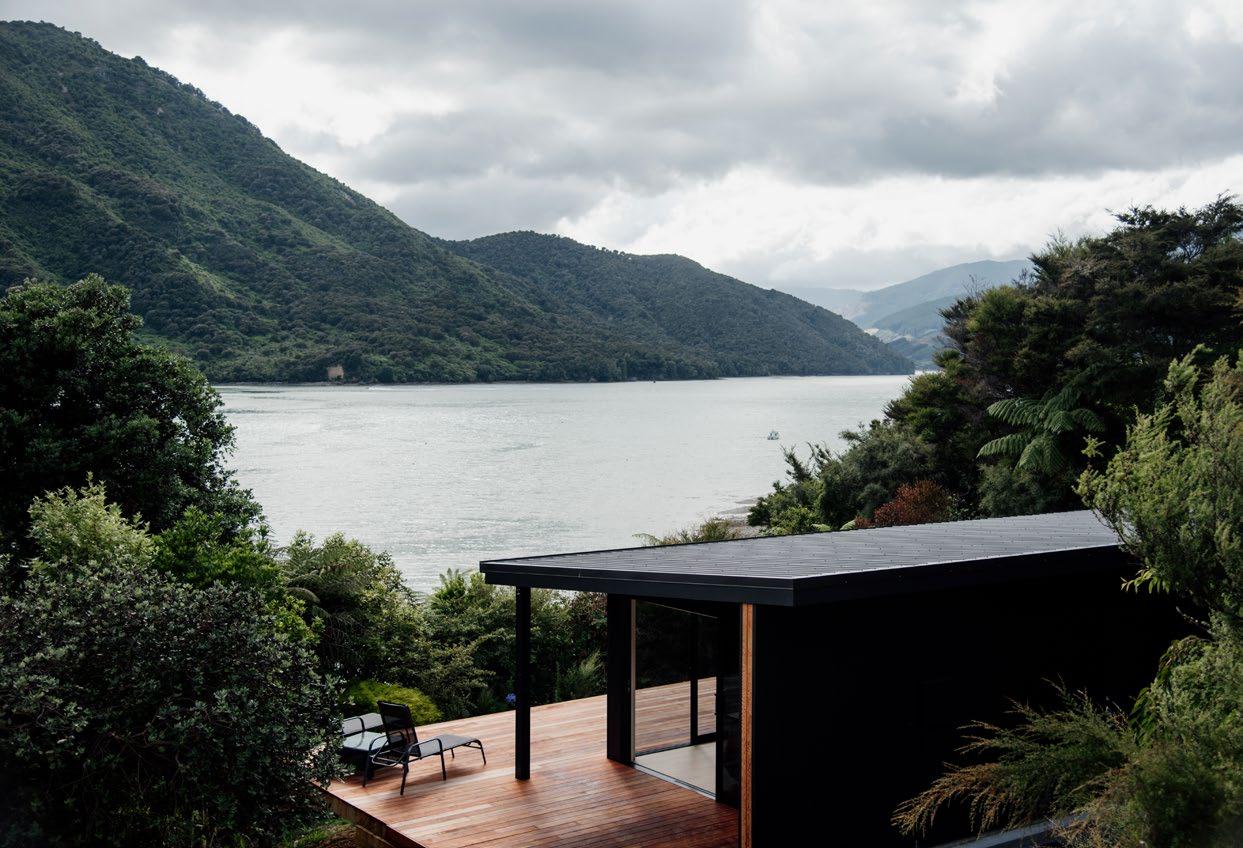
with the results,” they say. “Instead of having the constant worry of heavy ongoing maintenance costs, we now have essentially a new build complete with double glazing, insulation, heat pump and log burner. The investment has been well worth it.”
Daniel is delighted with their reaction. “I love this type of work,” he says. “You’ve got to have an open mind, be adaptable and enjoy all the challenges that come along. I am a hands-on builder and whether I am building a new home or undertaking a renovation like this, I enjoy being on site and managing every aspect of the work - day in, day out. It really helps to achieve a finished product I can be proud of and there is nothing quite like seeing the joy on owner’s faces when the job is complete.”
49
Delivering stress-free renovations to the region

Providing specialist home renovation services throughout the region, Refresh Renovations Marlborough can handle entire renovation projects from ideation to execution, ensuring your renovation experience is a positive one. Consultant Nita Craig combines her experience in business systems and project management with her passion for interiors to deliver spectacular renovations.
With a deep understanding of the highs and lows of home renovations, Nita brings her cool and calming presence, and a talented team to provide an enjoyable and stress-free renovation experience. “I have always loved the challenge of providing practical solutions and working with people and have a keen passion and interest in renovating.”


“We are focused on working on clear designs and detailed project briefs that are agreed upon at the start of each project. I always say to my customers that once we have a definite vision, it is my job to deliver it for them as efficiently as possible to the agreed budget.”

Never compromising on customer service and quality, Refresh Renovations aim for each project experience to be an enjoyable one. Most recently the team were put through their paces with the completion of a particularly challenging property. “It was a deceased

estate that the siblings wanted to update and refresh, to then be able to either rent or sell.” The property was bought 28 years ago by their sister and the dated interior was going to make it challenging to rent the property, explains Nita. “Both siblings are based out of town and contacted me with their plans. After conferring with an estate agent and completing a rental assessment, we understood what the rental and sale potential was and proceeded with the concept design process.”
Using the teams Matterport camera and 3D walkthrough designs, it is easy to ‘walk through’ the site and get a feel for the finished look without physically being onsite. Covid delays, time constraints, road closures, supply issues and navigating original design elements all contributed to a challenging but successful project. “The change in the entire property has been very satisfying and we are sure it will make a great modern and easy living home for the new owner! The relationships we have with our amazing team of subcontractors is what makes these projects possible, we thank them for pulling out all the stops to get this project completed within the time frame.”
refreshrenovations.co.nz
50 February 2023
Nita Craig transformed her clients kitchen from before (bottom right) to after (top right).







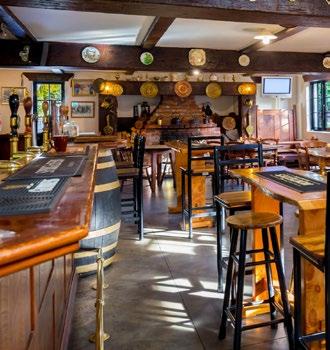


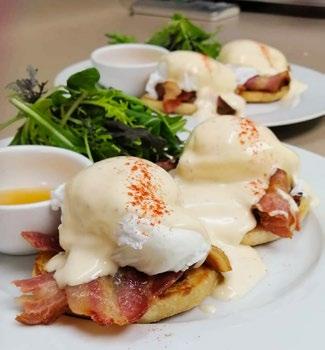
December 2022 52
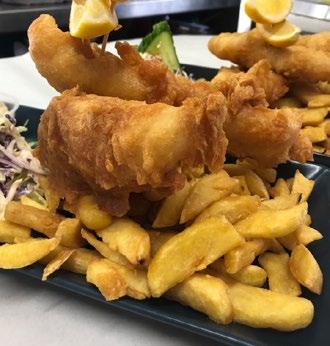


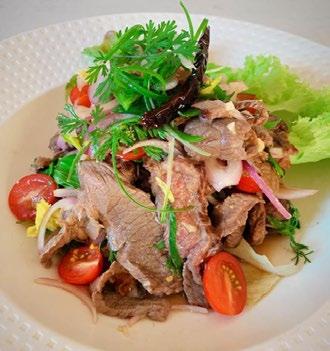
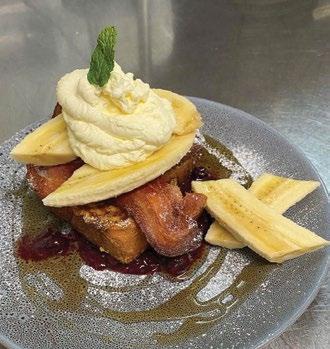

53










What’s On
For updated information visit www.follow-me.co.nz

Fri 10 Feb
FESTIVAL WARM UP
Kick-start your Marlborough Wine & Food Festival weekend with the team at Forrest Wines. Come along and enjoy great wine, delicious food and wonderful live music from local favourite, Sam Merrall.

Forrest Estate Wines, 19 Blicks Road, Renwick
Sat 11 Feb
MARLBOROUGH
WINE
& FOOD FESTIVAL AFTER PARTY
Keep the party going after this year’s Marlborough Wine & Food Festival. There will be live music from 3pm along with delicious food from Kustom Cooks. Ticket required.

Woodbourne Tavern & Motels, 80 High Street, Renwick
Wed 22 Feb
RELAY FOR LIFE CHARITY AUCTION
Charity auction event to raise funds to support Cancer Society Marlborough’s biennial Relay for Life fundraiser. Everyone is invited!

Lansdowne Park, Lansdowne Road, Blenheim
Wed 8 Feb
ROCK FERRY WINE’S TWILIGHT MARKET
Enjoy an evening stroll through the stalls of local artisan producers, glass of wine in hand. Or pick up a bite to eat from one of the food trucks and settle in to watch the setting sun.
Rock Ferry Cellar Door, 130 Hammerichs Road, Blenheim
Sat 11 Feb
MARLBOROUGH WINE & FOOD FESTIVAL

2023
New Zealand’s longest running wine and food festival is back and this time in a brand new location, right in the heart of wine country. Have you secured your tickets yet?

Renwick Domain, 8 Uxbridge Street, Renwick
Sun 12 Feb
SEDDON’S MARKET ON THE GREEN

More than just a marketcome and experience your local rural town. Lots on offer including artisan stalls, fresh produce, clothing, car boot sale and more.
The Station, 8 Mills Street, Seddon
Sat 25 - Sun 26 Feb
RNZPBA CANTERBURY CENTRE BLENHEIM PIPE BAND CONTEST

Gather your friends and family, bring along your chairs and picnics and enjoy watching this twoday competition celebrating Scottish culture.
Lansdowne Park, Lansdowne Road, Blenheim
FEBRUARY | 23
Marlborough Artisan Market

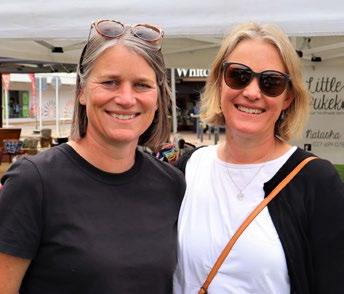
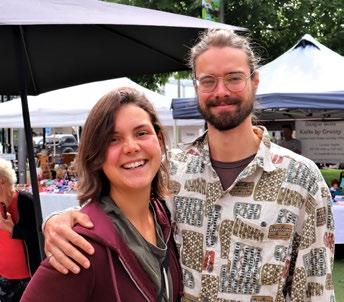
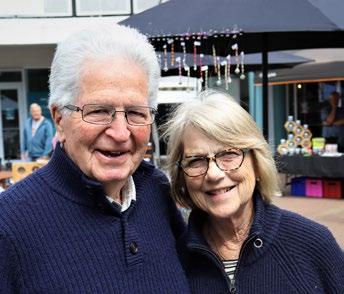







 Corner Market and High Streets, Blenheim
1. Doug and Lois Millar
2. David and Anthea Churchill, Bev Taylor and Gordon Mounsey
3. Joseph Nihotte and Lexi Kerr
4. Luka Wentzien and Sacha Masai
5. Peter and Michaela Venning
6. Nicky Wallace and Jane Johnston
7. Kate and Nathan Williams and Emma Hepburn
8. Sandie and Lewis Scott
Corner Market and High Streets, Blenheim
1. Doug and Lois Millar
2. David and Anthea Churchill, Bev Taylor and Gordon Mounsey
3. Joseph Nihotte and Lexi Kerr
4. Luka Wentzien and Sacha Masai
5. Peter and Michaela Venning
6. Nicky Wallace and Jane Johnston
7. Kate and Nathan Williams and Emma Hepburn
8. Sandie and Lewis Scott
1 2 4 6 3 5 7 8
Frank Nelson
Bamboo Tiger & Tiki Bar














Hotel d'Urville, Blenheim


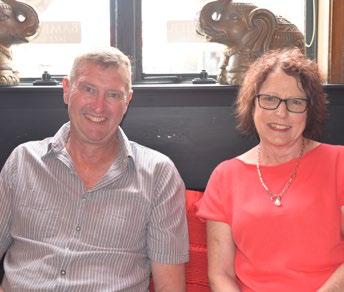

 1. Ben and Cara Wealthall
2. Rob Hammond, Sue White and Phillip Watson
3. Sharon Blount and Diane Parish
4. Jeannie Mark and Leigh Effevion-Smith
5. Krystal Palmer and Leonie MacDonald
6. Paul and Pip Macfarlane
7. Catherine McKenzie and Dean Coward
8. Terry Kearns, Robyn White, Tracey Kearns and Sarah Cotton
1. Ben and Cara Wealthall
2. Rob Hammond, Sue White and Phillip Watson
3. Sharon Blount and Diane Parish
4. Jeannie Mark and Leigh Effevion-Smith
5. Krystal Palmer and Leonie MacDonald
6. Paul and Pip Macfarlane
7. Catherine McKenzie and Dean Coward
8. Terry Kearns, Robyn White, Tracey Kearns and Sarah Cotton
1 2 4 6 3 5 7 8
Marlborough Magazine
Martime Festival





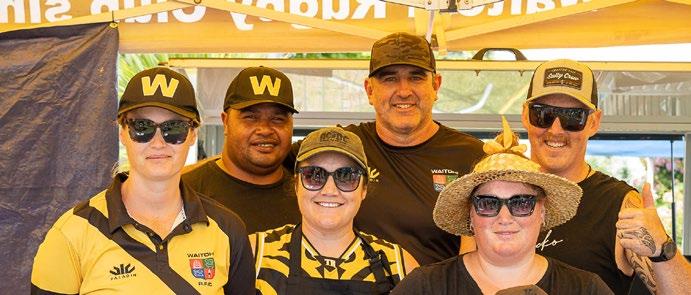
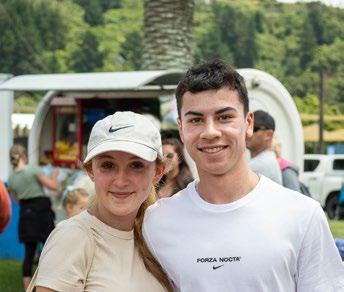


 Picton Foreshore
1. Melany Cantu and Steve Cairns
2. Myles Nichols, Lynne Morris, Julian Powell, Tracey Barwick, Joe Powell and Jason Dennison
3. Nova, Robyn and TJ Saunders
4. Sophia Green with Apa and Kowhai Herangi
5. Scarlett Venrooy and Leon Hawkins
6. Saxon Rapana with Rakingi and Mihi Raj
7. The Waitohi JAB committee
8. Rebecca Woledge and Carolyn Pickering
Picton Foreshore
1. Melany Cantu and Steve Cairns
2. Myles Nichols, Lynne Morris, Julian Powell, Tracey Barwick, Joe Powell and Jason Dennison
3. Nova, Robyn and TJ Saunders
4. Sophia Green with Apa and Kowhai Herangi
5. Scarlett Venrooy and Leon Hawkins
6. Saxon Rapana with Rakingi and Mihi Raj
7. The Waitohi JAB committee
8. Rebecca Woledge and Carolyn Pickering
1 2
3 5 7 8
Marlborough Magazine
4 6






















59 passion dream More menu PLUS: Jessica choice ON THE STREET KRISTA FINDS PASSION Home INTERIOR TIPS




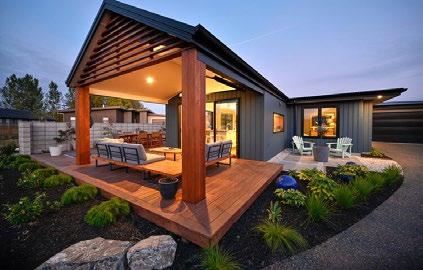












 Marlborough Wine & Food Festival
Marlborough Wine & Food Festival











































































 Chris Hebberd
Chris Hebberd




























































































 Laura McCone
Laura McCone





































































 Corner Market and High Streets, Blenheim
1. Doug and Lois Millar
2. David and Anthea Churchill, Bev Taylor and Gordon Mounsey
3. Joseph Nihotte and Lexi Kerr
4. Luka Wentzien and Sacha Masai
5. Peter and Michaela Venning
6. Nicky Wallace and Jane Johnston
7. Kate and Nathan Williams and Emma Hepburn
8. Sandie and Lewis Scott
Corner Market and High Streets, Blenheim
1. Doug and Lois Millar
2. David and Anthea Churchill, Bev Taylor and Gordon Mounsey
3. Joseph Nihotte and Lexi Kerr
4. Luka Wentzien and Sacha Masai
5. Peter and Michaela Venning
6. Nicky Wallace and Jane Johnston
7. Kate and Nathan Williams and Emma Hepburn
8. Sandie and Lewis Scott














 1. Ben and Cara Wealthall
2. Rob Hammond, Sue White and Phillip Watson
3. Sharon Blount and Diane Parish
4. Jeannie Mark and Leigh Effevion-Smith
5. Krystal Palmer and Leonie MacDonald
6. Paul and Pip Macfarlane
7. Catherine McKenzie and Dean Coward
8. Terry Kearns, Robyn White, Tracey Kearns and Sarah Cotton
1. Ben and Cara Wealthall
2. Rob Hammond, Sue White and Phillip Watson
3. Sharon Blount and Diane Parish
4. Jeannie Mark and Leigh Effevion-Smith
5. Krystal Palmer and Leonie MacDonald
6. Paul and Pip Macfarlane
7. Catherine McKenzie and Dean Coward
8. Terry Kearns, Robyn White, Tracey Kearns and Sarah Cotton









 Picton Foreshore
1. Melany Cantu and Steve Cairns
2. Myles Nichols, Lynne Morris, Julian Powell, Tracey Barwick, Joe Powell and Jason Dennison
3. Nova, Robyn and TJ Saunders
4. Sophia Green with Apa and Kowhai Herangi
5. Scarlett Venrooy and Leon Hawkins
6. Saxon Rapana with Rakingi and Mihi Raj
7. The Waitohi JAB committee
8. Rebecca Woledge and Carolyn Pickering
Picton Foreshore
1. Melany Cantu and Steve Cairns
2. Myles Nichols, Lynne Morris, Julian Powell, Tracey Barwick, Joe Powell and Jason Dennison
3. Nova, Robyn and TJ Saunders
4. Sophia Green with Apa and Kowhai Herangi
5. Scarlett Venrooy and Leon Hawkins
6. Saxon Rapana with Rakingi and Mihi Raj
7. The Waitohi JAB committee
8. Rebecca Woledge and Carolyn Pickering


























